
+1-905-820-8833
Call us Mon - Fri 9am-5pm EST
+1-905-782-6274
WhatsApp - Text us


Print Head Doctor
Giving a second life to your print heads .

Ideal for regular print head maintenance
Unclogs severely blocked heads
Easy to use, fully automated & remotely controlled
Supports all types of inkjet print heads
Recovers UV, solvent, aqueous & specialty print heads
Meet us at the Printing United Expo, booth SL7259, Las Vegas Convention Center, September 10-12, 2024

We support all popular inkjet print heads. We can also make custom adapters for you.
Pressure Control
Electronic fluid pressure and vacuum control keeps the print heads safe and the cleaning process effective.

Our custom formulated recovery fluids for solvent, eco-solvent, UV curable and water-based inks guarantee the best results.
Temperature Control
PHD machines can heat the recovery fluids to an optimal temperature for best cleaning results.

Our YouTube Channel
Ricoh gen5 uv print head recovery with phd17.

Kyocera KJ4B Print Head Recovery with PHD17

Epson i3200 print head recovery with PHD18

PHD17 Installation and Operation Manual

0 items in cart
Subtotal: $0.00 USD
- Tech Support
- ChipCharger Login
- Print Head Doctor
Print Head Doctor 11
Print Head Doctor 12
- $2,995.00 USD
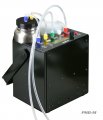
Print Head Doctor Mobile
- $1,500.00 USD
Print Head Doctor 11 machine for recovery of solvent, UV and water-based print heads.
- Ultrasonic Tank Standard: 40 kHz, Fixed Power 50W Advanced: 75 kHz, Variable Power 12-50W (+$120.00 USD)
- Pump Configuration Default: All standard pumps Advanced: 1 Swiss Pump, 1 Standard Pump (+$260.00 USD) High Performance: 2 Swiss Pumps (+$520.00 USD)
- Voltage 120V 220V
- Tank size Default (0.7L) Large (1.4L) - fits 2 adapters (+$500.00 USD) Extra Large (2.2L) - for big printheads (+$1,000.00 USD)
- Adapter 1: Please select Brother GT3 Series (381/541/782) (+$400.00 USD) Brother GTX (L tank needed) (+$400.00 USD) Canon PF-03 (+$400.00 USD) Canon IP3680 (+$400.00 USD) Durst Dual Head (+$400.00 USD) Dimatix StarFire SG1024 (L tank needed) (+$400.00 USD) Dimatix StarFire SG1024 Pro (L tank and Pro panel needed) (+$720.00 USD, +2 lbs) Durst Quadro Array (+$400.00 USD) Epson GS6000 (L tank needed) (+$400.00 USD) Epson 2200 (+$400.00 USD) Epson T1100 (+$400.00 USD) Epson 5113 (4-port) (+$400.00 USD) Epson 5113 (8-port) (+$400.00 USD) Epson DX2 (+$400.00 USD) Epson DX3 (+$400.00 USD) Epson DX4 (+$400.00 USD) Epson DX5 (+$400.00 USD) Epson DX6 (+$400.00 USD) Epson DX7 (+$400.00 USD) Epson TFP (+$400.00 USD) Epson DX5/DX6/DX7 Pro (L tank and a Pro panel needed) (+$720.00 USD, +2 lbs) Epson 4720 Pro Adapter (L tank and a Pro panel needed) (+$720.00 USD) Fujifilm Dimatix Samba (L tank needed) (+$400.00 USD) GEN4 Pro (L tank and a Pro panel needed) (+$720.00 USD, +2 lbs) HP Z6100 (+$400.00 USD) HP5500 (+$400.00 USD) HP X2 (+$400.00 USD) HP LX610 (XL tank needed) (+$400.00 USD) HP Aprion (XL tank needed) (+$400.00 USD) Inca Onset (+$400.00 USD) Inca Spyder (+$400.00 USD) KM1024 Pro (L tank and Pro panel needed) (+$720.00 USD, +2 lbs) KM512 Pro (L tank and a Pro panel needed) (+$720.00 USD, +2 lbs) KM1800 Pro Adapter (L tank and a Pro panel needed) (+$720.00 USD) Kyocera KJ4 300dpi Pro (XL tank and Pro panel needed) (+$680.00 USD, +3 lbs) Kyocera KJ4 1200dpi Pro (XL tank and Pro panel needed) (+$720.00 USD, +3 lbs) Kyocera 600dpi Pro (XL tank and Pro Panel needed) (+$680.00 USD, +3 lbs) Konica-Minolta KM1024 (+$400.00 USD) Konica-Minolta KM512 (+$400.00 USD) Konica-Minolta KM256 (+$400.00 USD) Kyocera KJ4A/B Pro (XL tank needed) (+$680.00 USD, +2 lbs) Kyocera KJ4A/B (XL tank needed) (+$400.00 USD) Panasonic UH-HA (+$400.00 USD) Q-Class Pro (L tank and a Pro panel needed) (+$720.00 USD, +3 lbs) Ricoh Gen3 Objet (+$400.00 USD) Ricoh Gen4 (+$400.00 USD) Ricoh/Hitachi Gen3 (+$400.00 USD) Ricoh GEN4L 1-channel (+$400.00 USD) Ricoh Gen4L 2-channel (+$400.00 USD) Ricoh Gen5 (+$400.00 USD) Ricoh GEN5 Pro (L tank and Pro panel needed) (+$720.00 USD, +2 lbs) Spectra Polaris (+$400.00 USD) Spectra Q-Class (+$400.00 USD) Spectra S-class (+$400.00 USD) Spectra Nova Piezo Module (+$400.00 USD) Seiko SPT1020 (+$400.00 USD) Spectra Q-Class for Kornit (+$400.00 USD) Seiko SPT255 (+$400.00 USD) Seiko SPT508 / Vutek GS (+$400.00 USD) Seiko IRH2523 (SPT508) Pro (L tank and Pro panel needed) (+$720.00 USD, +2 lbs) Seiko IRH2523W-2130 (SPT508) Pro (L tank and Pro panel needed) (+$720.00 USD, +2 lbs) Seiko SPT510 / Vutek QS (+$400.00 USD) Seiko RC1536 (XL tank needed) (+$400.00 USD) Spectra Galaxy Piezo Module (+$400.00 USD) Spectra Nova / Galaxy (+$400.00 USD) Seiko IRH2513 (+$400.00 USD) Toshiba Tec (+$250.00 USD) Vutek 5300/3300 (L tank needed) (+$400.00 USD) Vutek 3360 / PV200 (+$400.00 USD) Vutek 2360 Transitional (+$400.00 USD) Vutek 2360/5330 (+$400.00 USD) Xaar 1001 (+$400.00 USD) Xaar 500 (+$250.00 USD) Xaar Proton (+$400.00 USD) Xaar 128 (Arizona) (+$250.00 USD) Xaar 128 (+$250.00 USD)
- Adapter 2: None Brother GTX (L tank needed) (+$400.00 USD) Brother GT3 Series (381/541/782) (+$400.00 USD) Canon IP3680 (+$400.00 USD) Canon PF-03 (+$400.00 USD) Durst Dual Head (+$400.00 USD) Durst Quadro Array (+$400.00 USD) Dimatix StarFire SG1024 (L tank needed) (+$400.00 USD) Dimatix StarFire SG1024 Pro (L tank and Pro panel needed) (+$720.00 USD, +2 lbs) Epson 2200 (+$400.00 USD) Epson TFP (+$400.00 USD) Epson 5113 (4-port) (+$400.00 USD) Epson T1100 (+$400.00 USD) Epson 5113 (8-port) (+$400.00 USD) Epson DX2 (+$400.00 USD) Epson DX3 (+$400.00 USD) Epson DX4 (+$400.00 USD) Epson DX5 (+$400.00 USD) Epson DX6 (+$400.00 USD) Epson DX7 (+$400.00 USD) Epson DX5/DX6/DX7 Pro (L tank and a Pro panel needed) (+$720.00 USD, +2 lbs) Epson 4720 Pro Adapter (L tank and a Pro panel needed) (+$720.00 USD) Epson GS6000 (L tank needed) (+$400.00 USD) Fujifilm Dimatix Samba (L tank needed) (+$400.00 USD) GEN4 Pro (L tank and a Pro panel needed) (+$720.00 USD, +2 lbs) Hitachi/Ricoh Gen3 (+$400.00 USD) HP Z6100 (+$400.00 USD) HP5500 (+$400.00 USD) HP X2 (+$400.00 USD) HP LX610 (XL tank needed) (+$400.00 USD) HP Aprion (XL tank needed) (+$400.00 USD) Inca Spyder (+$400.00 USD) Inca Onset (+$400.00 USD) Kyocera KJ4A/B Pro (XL tank needed) (+$680.00 USD, +2 lbs) KM512 Pro (L tank and a Pro panel needed) (+$720.00 USD, +2 lbs) KM1024 Pro (L tank and Pro panel needed) (+$720.00 USD, +2 lbs) KM1800 Pro Adapter (L tank and a Pro panel needed) (+$720.00 USD) Kyocera 600dpi Pro (XL tank and Pro Panel needed) (+$680.00 USD, +3 lbs) Kyocera KJ4 300dpi Pro (XL tank and Pro panel needed) (+$680.00 USD, +3 lbs) Kyocera KJ4 1200dpi Pro (XL tank and Pro panel needed) (+$720.00 USD, +3 lbs) Kyocera KJ4A/B (XL tank needed) (+$400.00 USD) Konica-Minolta KM512 (+$400.00 USD) Konica-Minolta KM1024 (+$400.00 USD) Konica-Minolta KM256 (+$400.00 USD) Q-Class Pro (L tank and a Pro panel needed) (+$720.00 USD, +3 lbs) Ricoh Gen4 (+$400.00 USD) Ricoh Gen5 (+$400.00 USD) Ricoh GEN5 Pro (L tank and Pro panel needed) (+$720.00 USD, +2 lbs) Ricoh Gen4L 1-channel (+$400.00 USD) Ricoh Gen3 Objet (+$400.00 USD) Ricoh Gen4L 2-channel (+$400.00 USD) Seiko SPT1020 (+$400.00 USD) Seiko SPT508 / Vutek GS (+$400.00 USD) Seiko IRH2523 (SPT508) Pro (L tank and Pro panel needed) (+$720.00 USD, +2 lbs) Seiko SPT510 / Vutek QS (+$400.00 USD) Spectra Q-Class (+$400.00 USD) Seiko RC1536 (XL tank needed) (+$400.00 USD) Spectra S-class (+$400.00 USD) Spectra Polaris (+$400.00 USD) Seiko SPT255 (+$400.00 USD) Spectra Nova Piezo Module (+$400.00 USD) Spectra Nova/Galaxy (+$400.00 USD) Spectra Galaxy Piezo Module (+$400.00 USD) Seiko IRH2513 (+$400.00 USD) Spectra Q-Class for Kornit (+$400.00 USD) Seiko IRH2523W-2130 (SPT508) Pro (L tank and Pro panel needed) (+$720.00 USD, +2 lbs) Toshiba Tec (+$250.00 USD) Vutek 2360 Transitional (+$400.00 USD) Vutek 2360/5330 (+$400.00 USD) Vutek 5300/3300 (L tank needed) (+$400.00 USD) Vutek 3360, PV200/600 (+$400.00 USD) Xaar 1001 (+$400.00 USD) Xaar 128/126 (+$250.00 USD) Xaar 128 (Arizona) (+$250.00 USD) Xaar Proton (+$400.00 USD) Xaar 500 (+$250.00 USD)
- Fluids set: Please select Solvent based: 1X, 2X, 3X, 4X (+$400.00 USD) Standard UV Curable: J-UV, R-UV, 4UV, 7UV (+$400.00 USD) Advanced UV Curable: R-UV, 4UV, 7UV, 9UV (+$550.00 USD) Eco-solvent Epson: 1DX, 2DX, 3DX, 4DX (+$400.00 USD) Water based: 1W, 2W, 3W, 4W (+$400.00 USD) Extended solvent: 1X, 2X, 3X, 4X, 5X, 6X (+$650.00 USD) Extended UV: H-UV, J-UV, R-UV, 4UV, 5UV, 7UV, 9UV (+$890.00 USD) Extended Eco-solvent: 1DX, 2DX, 3DX, 4DX, 5DX, 6DX (+$650.00 USD)
- Fluids Set 2: Please select Solvent based: 1X, 2X, 3X, 4X (+$400.00 USD) Standard UV curable: J-UV, R-UV, 4UV, 7UV (+$400.00 USD) Advanced UV Curable: R-UV, 4UV, 7UV, 9UV (+$550.00 USD) Eco-solvent Epson: 1DX, 2DX, 3DX, 4DX (+$400.00 USD) Water based: 1W, 2W, 3W, 4W (+$400.00 USD) Extended solvent: 1X, 2X, 3X, 4X, 5X, 6X (+$650.00 USD) Extended UV: H-UV, J-UV, R-UV, 4UV, 5UV, 7UV, 9UV (+$890.00 USD) Extended Eco-solvent: 1DX, 2DX, 3DX, 4DX, 5DX, 6DX (+$650.00 USD)
- Pro Panel: None 8A (8 ports + air) (+$480.00 USD, +2 lbs)
- $2,050.00 USD
- Description
- Specification
The ultimate recovery system for all kinds of solvent, eco-solvent, water-based and UV print heads.
This model replaces model 7. It's equipped with dedicated vacuum pumps to take advantage of the Sonic RF Caps .
Advantages of Print Head Doctor 11:
- Complete control of the machine from Android devices.
- Capable of doing forward, reverse and thru-head flushing of print heads, with or without Reverse Flushing Caps .
- It has dedicated vacuum pumps that allow Vacuum-Assisted Forward Flushing using Sonic RF Caps , as well as the reverse flushing. The forward pressure can be reduced which makes the recovery process safer for the print heads, while more effective at the same time.
- Three gauges for monitoring pressure and vacuum in the RF cap and in the print head, and a gauge for monitoring the first stage filters.
- Six pumps provide sufficient flow even for print heads with a great number of nozzles.
- Fine-tuned recovery cycles accommodate various degrees of clogging, types of print heads and inks.
- New design allows ease of service of the main filter and the pumps because they are made as plug-in modules. It takes less than a minute to replace them and you don't need any tools.
- First stage filters are conveniently located on the side wall and can be replaced in seconds.
- Dual first-stage filters and intake tubes for higher fluid flow rate and longer period between changing filters.
- Rugged housing with all components built-in.
- Reliable electronic module with a digital indicator of the cycle number and remaining time in minutes.
- All solvent-proof materials.
- Weight 40.0000 lbs
- SKU PHD11-110V
- Ultrasonic Tank Standard: 40 kHz, Fixed Power 50W, Advanced: 75 kHz, Variable Power 12-50W
- Pump Configuration Default: All standard pumps, Advanced: 1 Swiss Pump, 1 Standard Pump, High Performance: 2 Swiss Pumps
- Pro Panel: None, 8A (8 ports + air)
- Voltage 120V, 220V
- Tank size Default (0.7L), Large (1.4L) - fits 2 adapters, Extra Large (2.2L) - for big printheads
- Adapter 1: Please select, Brother GT3 Series (381/541/782), Brother GTX (L tank needed), Canon PF-03, Canon IP3680, Durst Dual Head, Dimatix StarFire SG1024 (L tank needed), Dimatix StarFire SG1024 Pro (L tank and Pro panel needed), Durst Quadro Array, Epson GS6000 (L tank needed), Epson 2200, Epson T1100, Epson 5113 (4-port), Epson 5113 (8-port), Epson DX2, Epson DX3, Epson DX4, Epson DX5, Epson DX6, Epson DX7, Epson TFP, Epson DX5/DX6/DX7 Pro (L tank and a Pro panel needed), Epson 4720 Pro Adapter (L tank and a Pro panel needed), Fujifilm Dimatix Samba (L tank needed), GEN4 Pro (L tank and a Pro panel needed), HP Z6100, HP5500, HP X2, HP LX610 (XL tank needed), HP Aprion (XL tank needed), Inca Onset, Inca Spyder, KM1024 Pro (L tank and Pro panel needed), KM512 Pro (L tank and a Pro panel needed), KM1800 Pro Adapter (L tank and a Pro panel needed), Kyocera KJ4 300dpi Pro (XL tank and Pro panel needed), Kyocera KJ4 1200dpi Pro (XL tank and Pro panel needed), Kyocera 600dpi Pro (XL tank and Pro Panel needed), Konica-Minolta KM1024, Konica-Minolta KM512, Konica-Minolta KM256, Kyocera KJ4A/B Pro (XL tank needed), Kyocera KJ4A/B (XL tank needed), Panasonic UH-HA, Q-Class Pro (L tank and a Pro panel needed), Ricoh Gen3 Objet, Ricoh Gen4, Ricoh/Hitachi Gen3, Ricoh GEN4L 1-channel, Ricoh Gen4L 2-channel, Ricoh Gen5, Ricoh GEN5 Pro (L tank and Pro panel needed), Spectra Polaris, Spectra Q-Class, Spectra S-class, Spectra Nova Piezo Module, Seiko SPT1020, Spectra Q-Class for Kornit, Seiko SPT255, Seiko SPT508 / Vutek GS, Seiko IRH2523 (SPT508) Pro (L tank and Pro panel needed), Seiko IRH2523W-2130 (SPT508) Pro (L tank and Pro panel needed), Seiko SPT510 / Vutek QS, Seiko RC1536 (XL tank needed), Spectra Galaxy Piezo Module, Spectra Nova / Galaxy, Seiko IRH2513, Toshiba Tec, Vutek 5300/3300 (L tank needed), Vutek 3360 / PV200, Vutek 2360 Transitional, Vutek 2360/5330, Xaar 1001, Xaar 500, Xaar Proton, Xaar 128 (Arizona), Xaar 128
- Adapter 2: None, Brother GTX (L tank needed), Brother GT3 Series (381/541/782), Canon IP3680, Canon PF-03, Durst Dual Head, Durst Quadro Array, Dimatix StarFire SG1024 (L tank needed), Dimatix StarFire SG1024 Pro (L tank and Pro panel needed), Epson 2200, Epson TFP, Epson 5113 (4-port), Epson T1100, Epson 5113 (8-port), Epson DX2, Epson DX3, Epson DX4, Epson DX5, Epson DX6, Epson DX7, Epson DX5/DX6/DX7 Pro (L tank and a Pro panel needed), Epson 4720 Pro Adapter (L tank and a Pro panel needed), Epson GS6000 (L tank needed), Fujifilm Dimatix Samba (L tank needed), GEN4 Pro (L tank and a Pro panel needed), Hitachi/Ricoh Gen3, HP Z6100, HP5500, HP X2, HP LX610 (XL tank needed), HP Aprion (XL tank needed), Inca Spyder, Inca Onset, Kyocera KJ4A/B Pro (XL tank needed), KM512 Pro (L tank and a Pro panel needed), KM1024 Pro (L tank and Pro panel needed), KM1800 Pro Adapter (L tank and a Pro panel needed), Kyocera 600dpi Pro (XL tank and Pro Panel needed), Kyocera KJ4 300dpi Pro (XL tank and Pro panel needed), Kyocera KJ4 1200dpi Pro (XL tank and Pro panel needed), Kyocera KJ4A/B (XL tank needed), Konica-Minolta KM512, Konica-Minolta KM1024, Konica-Minolta KM256, Q-Class Pro (L tank and a Pro panel needed), Ricoh Gen4, Ricoh Gen5, Ricoh GEN5 Pro (L tank and Pro panel needed), Ricoh Gen4L 1-channel, Ricoh Gen3 Objet, Ricoh Gen4L 2-channel, Seiko SPT1020, Seiko SPT508 / Vutek GS, Seiko IRH2523 (SPT508) Pro (L tank and Pro panel needed), Seiko SPT510 / Vutek QS, Spectra Q-Class, Seiko RC1536 (XL tank needed), Spectra S-class, Spectra Polaris, Seiko SPT255, Spectra Nova Piezo Module, Spectra Nova/Galaxy, Spectra Galaxy Piezo Module, Seiko IRH2513, Spectra Q-Class for Kornit, Seiko IRH2523W-2130 (SPT508) Pro (L tank and Pro panel needed), Toshiba Tec, Vutek 2360 Transitional, Vutek 2360/5330, Vutek 5300/3300 (L tank needed), Vutek 3360, PV200/600, Xaar 1001, Xaar 128/126, Xaar 128 (Arizona), Xaar Proton, Xaar 500
- Fluids set: Please select, Solvent based: 1X, 2X, 3X, 4X, Standard UV Curable: J-UV, R-UV, 4UV, 7UV, Advanced UV Curable: R-UV, 4UV, 7UV, 9UV, Eco-solvent Epson: 1DX, 2DX, 3DX, 4DX, Water based: 1W, 2W, 3W, 4W, Extended solvent: 1X, 2X, 3X, 4X, 5X, 6X, Extended UV: H-UV, J-UV, R-UV, 4UV, 5UV, 7UV, 9UV, Extended Eco-solvent: 1DX, 2DX, 3DX, 4DX, 5DX, 6DX
- Fluids Set 2: Please select, Solvent based: 1X, 2X, 3X, 4X, Standard UV curable: J-UV, R-UV, 4UV, 7UV, Advanced UV Curable: R-UV, 4UV, 7UV, 9UV, Eco-solvent Epson: 1DX, 2DX, 3DX, 4DX, Water based: 1W, 2W, 3W, 4W, Extended solvent: 1X, 2X, 3X, 4X, 5X, 6X, Extended UV: H-UV, J-UV, R-UV, 4UV, 5UV, 7UV, 9UV, Extended Eco-solvent: 1DX, 2DX, 3DX, 4DX, 5DX, 6DX
| 5 | 5customers | |||
| 4 | 2customers | |||
| 3 | 0customers | |||
| 2 | 0customers | |||
| 1 | 0customers | |||
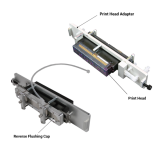
- $400.00 USD

- $299.00 USD

- $160.00 USD

- $125.00 USD
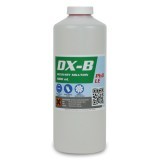
© 2000 - 2024 Digital Sign Technologies Inc.. All rights reserved. All prices are in US dollars.
Powered by X-Cart

- Linear Slides
- Escapements
- Sheet Metal
- ID Stamping
- Tri-Axis Tooling
- Gripper Accessories
- Rotary Actuators
- Blow Molding
- Stretching Cylinders
- Transfer Arms
- Nozzle Cylinders
- Needle Cylinders
- Multi-Motion
- Accessories
- Switches & Sensors
- Electric Actuators
My Product Lookup
- Rebuild Program
- Replacement Parts
- Custom Solutions
- Automotive & Workholding
- Automotive Assembly
- Automotive Suppliers
- Metal Stamping
- Food & Beverage
- Dairy Processing Equipment
- Meat Processing Equipment
- Produce Processing Equipment
- Ice Cream Manufacturing Equipment
- Poultry Processing Equipment
- Snack Food Processing Equipment
- Machine Builder Equipment
- Material Handling Equipment
- Semiconductor
- Stretch Blow Molding
- Tool Overview
- Unit Conversion
- Design Process Guide
- Product Animations
- Leadership Team
- News & Events
- Certifications
Get more out of your PHD experience
Cylinders - Pneumatic, Hydraulic, & Electric
Pneumatic, hydraulic, and electric cylinders are offered in a wide range of styles, sizes, and options for automated manufacturing, packaging, assembly applications and more. These cylinders range from Tom Thumb® Pneumatic Cylinders , known for durability and versatility, to robust compact cylinders when space requirements are a concern. PHD also offers the industry-standard Series CV ISO Pneumatic Cylinders designed for long travel lengths and long life, as well as the Series ECV Electric Cylinders with ball screws to meet various industry requirements.
Series CV Pneumatic ISO Cylinder
Full-featured, ISO and VDMA standardized pneumatic cylinders for superior performance. Optional Port Controls® regulate speed through the entire stroke and an optional Rodlok holds the rod in place wherever desired. A PTFE wear ring is included for greater support and increased actuator life. A variety of mounting accessories provide for simple integration.
Series CRS Pneumatic Compact Cylinder
A compact pneumatic cylinder for applications where short length is critical. The self-lubricating nitrile piston seal increases performance and provides the best actuator life expectancy in its class. This compact cylinder features a clear anodized extruded body with integral slots for flush mounting of switches.
Series CTS Guided Pneumatic Compact Cylinder
A non-rotating pneumatic cylinder with a short compact length. Chrome plated steel guide shafts prevent rotation and increase side load capacity. Optional shock pads extend cylinder life and minimize piston noise without adding additional length.
Series OCQ Pneumatic Compact Cylinder
These pneumatic compact cylinders are available in 10 bore sizes and with incremental stroke lengths. Standard shock pads reduce end of travel impact. Series OCQ Pneumatic Compact Cylinders are designed to be versatile and economical for use in any industry.
Series ECV Ball Screw and Lead Screw Electric Cylinders
Rod-style electric cylinders with ISO and VDMA mounting interfaces in either ball screw or lead screw models. These performance electric cylinders are available in a variety of sizes with two screw configurations per size, as well as a version with a non-rotating rod. The Your Motor, Your Way system allows for flexibility in the choice of motor and controls and is available in both an inline or foldback configuration.
Series OCG Round Body Pneumatic Cylinder
These repairable round body pneumatic cylinders are available in six bore sizes and with 10 standard travels lengths. Standard cushions reduce end of travel impact. Series OCG Pneumatic Cylinders are designed to be versatile and economical for use in any industry.
Series ECP Electric IP69K Cylinders
Series ECP Electric IP69K Cylinders are available in either ball screw or lead screw (polymer nut) versions, providing a wide range of high thrust or high speed capabilities. These performance electric cylinders are designed for food processing and packaging equipment utilized in high pressure/high temperature washdown and clean-in-place (CIP) environments.
Series A, AV, HV
Series a, av, hv tie rod hydraulic & pneumatic nfpa cylinder.
Tom Thumb® brand cylinders that feature a tie rod construction and are field repairable. Optional Port Controls® regulate speed through the entire stroke and the Rodlok option holds the rod in place wherever desired. Series A, AV, HV are designed to NFPA standards with a wide array of options and mounting styles for easy installation.
Series A2, AV2, HV2
Series a2, av2, hv2 4-position hydraulic & pneumatic cylinder.
Back-to-back Tom Thumb® cylinders that use common tie rods. This configuration provides up to four rod positions set by the stroke length of each cylinder. These two actuators are field repairable and have a wide range of mounting styles.
Series A3, A3V, H3V
Series a3, a3v, h3v 3-position hydraulic & pneumatic cylinder.
Feature two Tom Thumb® cylinders connected inline using common tie rods. This configuration provides three positions set by the stroke length of each cylinder. These two actuators are field repairable and have a wide range of mounting styles.
Series TD Air/Oil Tandem Cylinder
Tom Thumb® brand cylinders that combine pneumatic and hydraulic power for precise speed control and smooth operation. The unit is air powered while the hydraulic portion provides for control in a smooth and precise fashion. These tandem actuators are field repairable and have a wide range of mounting styles.
No Series match the selected Filters. Please try a different set of Filters.
Stay Connected
Subscribe to PHD News
2023 © PHD Inc. All Rights Reserved | Terms of Service
Manage Cookies | Privacy Policy

Contact Information
- PhD (History) Penn 2011
- JD Penn 2007
- BA Dartmouth 2002
- Constitutional Law and Civil Rights
- Legal History
- Social Justice, Equity, and Inclusion
- Torts, Restitution, and Insurance Law
Courses Taught
Law & Inequality| Social Welfare and American Law| Torts| U.S. Legal and Constitutional History| COVID & the Law
- Tani CV May 2024.pdf (PDF)
Karen M. Tani L’07, PhD’11
Seaman family university professor.
Karen M. Tani L’07, PhD’11 is a scholar of U.S. legal history, with broad interests in social welfare law, administrative agencies, and the role of rights in the modern American state.
Her current research is about the history of disability law in the late twentieth century. She teaches Torts, American Legal History, and Law & Inequality, as well as classes in the History Department, where she is jointly appointed.
Tani is the author of States of Dependency: Welfare, Rights, and American Governance, 1935-1972 (Cambridge University Press, 2016), which won the 2017 Cromwell Book Prize from the American Society for Legal History. The book sheds new light on the nature of modern American governance by examining legal contests over welfare benefits and administration in the years between the New Deal and the modern welfare rights movement.
Prior to joining the Penn Carey Law faculty, Tani was a Professor of Law at the University of California, Berkeley. She has also held visiting professor appointments at Columbia Law School and Yale Law School.
Tani is the first graduate of the University of Pennsylvania’s JD/PhD program in American Legal History. Following her law school graduation, she clerked for Judge Guido Calabresi of the U.S. Court of Appeals for the Second Circuit.
Featured Research
When a wrong creates a life: tort responses to children born from institutional sexual violence, 73 depaul l. rev. 617 (2024), disability and the ongoing federalism revolution , 133 yale l. j. 699 (2024) (with katie eyer), the disability docket , 72 am. u. l. rev 1709 (2023) (with jasmine harris & shira wakschlag), after 504: training the citizen-enforcers of disability rights , 42 disability stud. q. 3 (2023), the pennhurst doctrines and the lost disability history of the “new federalism” , 110 calif. l. rev. 1157 (2022), the disability frame , 170 u. pa. l. rev. 1663 (2022) (with jasmine harris), publications.
Welcome to the 2024-2025 school year! Contact OCS or make an appointment for an in-person or virtual advising session. Note: Appointments for first-year students will be available when classes begin.
- Undergraduates
- Ph.Ds & Postdocs
- Faculty/Staff
- Prospective Students & Guests
- Student Athletes
- First Generation and/or Low Income Students
- International Students
- LGBTQ Students
- Students with Disabilities
- Students of Color
- Student Veterans
- Advertising, Marketing & PR
- Finance, Insurance & Real Estate
- General Management & Leadership Development Programs
- Law & Legal Services
- Startups, Entrepreneurship & Freelance Work
- Environment, Sustainability & Energy
- Media & Communications
- Policy & Think Tanks
- Engineering
- Healthcare, Biotech & Global Public Health
- Life & Physical Sciences
- Programming & Data Science
- Graduate School
- Business School
- Health Professions
- Cover Letters & Correspondence
- Interview Preparation
- Professional Conduct & Etiquette
- Job Offers & Salary Negotiations
- Navigating AI in the Job Search Process
- Yale Career Link
- CareerShift
- Gap Year & Short-Term Opportunities
- Planning an International Internship
- Funding Your Experience
- Career Fairs/Networking Events
- On-Campus Recruiting
- Resource Database
- Job Market Insights
- Informational Interviewing
- Peer Networking Lists
- Building Your LinkedIn Profile
- YC First Destinations
- YC Four-Year Out
- GSAS Program Statistics
- Statistics & Reports
- Meet with OCS
- Student Organizations Workshop Request
- Office of Fellowships
- OCS Podcast Series
- Contact OCS
- OCS Mission & Policies
- Additional Yale Career Offices
- Designing Your Career
- Faculty & Staff
- Share This: Share Emily Early (PhD ’11, Anthropology) on Facebook Share Emily Early (PhD ’11, Anthropology) on LinkedIn Share Emily Early (PhD ’11, Anthropology) on X

Emily Early (PhD ’11, Anthropology)
What did you study at yale, and what is your current profession/job.
I am Associate Curator of Anthropology at the Arizona Museum of Natural History. I received a MPhil in Anthropology from Yale in 2008 and a PhD from Yale in 2011.
What do you like most about your current role? What do you find most challenging and/ or rewarding?
As an Associate Curator at a medium sized museum, I am fortunate enough to wear many hats. I love that every day brings something different. My main role is directing programs at our satellite site Mesa Grande Cultural Park, a Hohokam temple mound, and I really enjoy the creativity of planning educational programming and the interaction I have with the public. I am also involved in exhibit planning and, as with our programs, I really enjoy the challenge of making science applicable and understandable for an audience of all ages, backgrounds, and education levels. It is so rewarding to watch people grasp a difficult concept, like stratigraphy or evolution, because you prepared an example or curriculum that is easy to understand at every level.
How did your time at Yale shape your career trajectory?
I had always wanted a career in museums rather than in academia but was aware that positions were very limited and coveted, even more so than in universities! One of the reasons I chose Yale for graduate school was to work with the late Andrew Hill. He designed the human evolution exhibit at the Yale Peabody, had worked for many years at the National Museums of Kenya and had advised former graduate student Monique Scott in her museum career. I knew he would be an exceptional mentor.
What are the main skills that you acquired as a PhD student which help make you successful in your current career?
Multi-tasking and time management should be part of every student’s skill set but that is not always the case and I found both skills made a huge difference in terms of who was successful and who was not. The Yale curriculum for graduate students in Anthropology is pretty loose in that we had so much freedom to choose our courses and our thesis topics and Dr. Hill was as hands on or off as you wanted in his advising. I felt like I really had to know myself, strengths and weaknesses, to get through the program and that process of figuring out how to maximize yourself with your work and keep yourself balanced has really served me well in my career. I learned to set goals for myself and break tasks up into smaller pieces with shorter deadlines instead of just aiming for the larger results. That practice makes every goal manageable for me.
Did you acquire any professional experience related to your line of work while in graduate school?
Throughout my undergraduate career at Arizona State University I had volunteered and interned with local museums. A lot of graduate students give up hobbies or anything they view as recreational, erroneously believing that anything taking away time from your studying or writing is worthless, but I continued my volunteer activities. Not only was my volunteer work at the Yale Peabody good for my career (I made some wonderful connections and friends there) but it was good for my mental health to continue an activity that I truly enjoyed. I also had a lot of thesis work that was heavily museum collection based and was able to spend a good amount of time working in the National Museums of Kenya and visiting a few other museums. That provided me with hands on experience in dealing with collections issues and interacting with many museum departments.
What advice would you offer PhDs who are interested in your line of work?
Spend as much time as you can in museums and do not limit yourself to just research in collections. As a curator you should understand museums at every level and from every department. Help develop an exhibit, volunteer on the ground at a program, interact with the museum public and get involved in museum education. And be the public yourself – go to as many museums in your area of interest as possible. You should always be up to date on trends in exhibits and education as well as what is going on with collection management. Most importantly make sure you volunteer because museums rely on their volunteers and you should have experience with what your volunteers will want and need to keep the museum successful.
- Associate Curator of Anthropology
- Arizona Museum of Natural History
Office of Career Strategy
Visiting yale.
Sam Kesner, PhD '11, Boosts Mobility for Patients with Paralysis
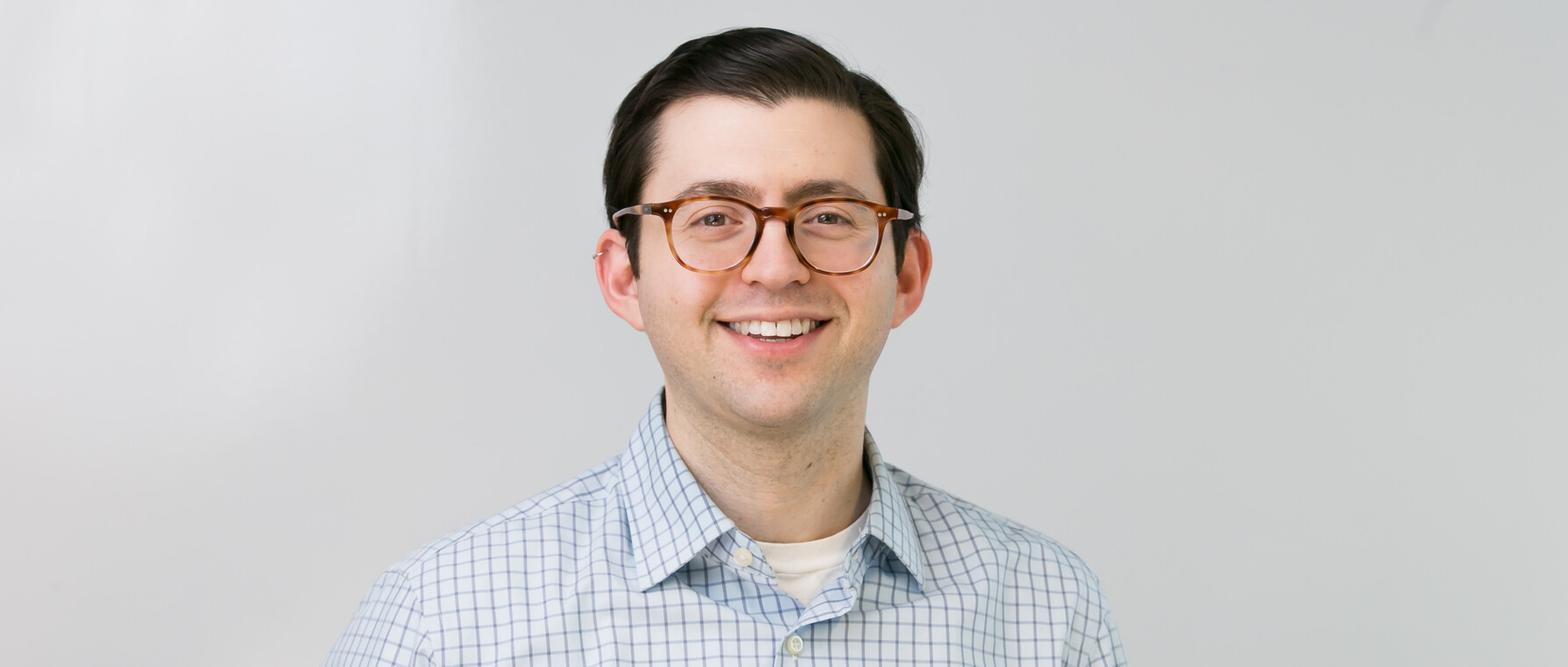
Share this page
For the hundreds of thousands of individuals in the US who suffer from paralysis or weakness in an arm or hand, daily tasks like lifting boxes or cooking dinner can be nearly impossible. Sam Kesner is working to help them regain some lost function.
Kesner, PhD ’11, is director of research and advanced development at Myomo , which produces a myoelectric-powered brace that helps a patient move an arm or hand as he or she intends, without implants or electrical stimulation. The robotic brace reads faint nerve signals from the skin’s surface, then activates motors to amplify weak muscle signals, which helps a patient move his or her hand and arm.
“Working with patients is so rewarding,” said Kesner, who earned his PhD in biomedical engineering at the Harvard John A. Paulson School of Engineering and Applied Sciences (SEAS). “Especially with kids, they are so excited to see their arm move for the first time, or regain function that was lost. It is so inspirational. Every time we see a patient we want to do more, we want to give them more ability.”
For Kesner, the work is the perfect marriage of his desire to improve the lives of others and his passion for robotics.
Growing up in the Boston suburbs, he felt drawn to science and engineering from a young age.
“I was the kind of kid who, by age 3, had already taken apart everything I could get my hands on,” he said. “I did a lot of experiments without my parents’ permission and caused a fair amount of damage around the house.”
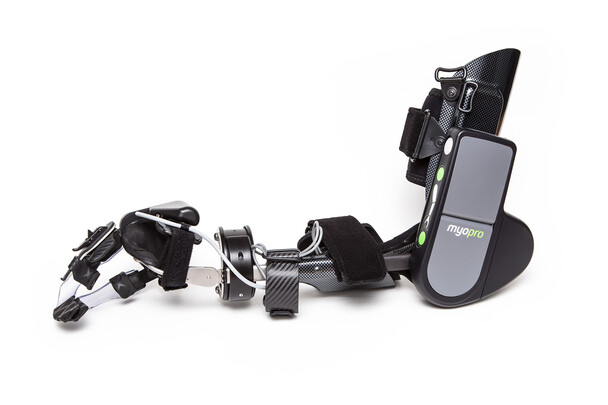
Kesner channeled that curiosity and enthusiasm into a mechanical engineering major at MIT, and then a master’s degree in space robotics. He was fascinated by how intelligent machines could interact with the world.
At MIT, Kesner worked on the power system for a hopping robot designed to explore the caves of Mars. While he had fun working on that project, a medical device design class inspired him to delve deeper into biomedical engineering, which he saw as a field that was more beneficial to humanity. Without knowing much about the program or school, he applied to SEAS and was impressed by the Harvard Biorobotics Lab of Rob Howe , Abbott and James Lawrence Professor of Engineering.
In Howe’s lab, Kesner helped develop a flexible, 3D ultrasound-guided robotic catheter that could enable a surgeon to operate on the fast-moving parts of a patient’s beating heart.
“If you could repair important structures of the heart, like the valves, without having to stop the heart and crack open the chest, it removes some of the most dangerous aspects of heart surgery,” he said.
The robotic catheter system that Kesner and his colleagues developed, known as ‘Cathbot,’ tracks the fast tissue motion of the heart using 3D ultrasound imaging in real time. Those detailed images, combined with motion compensation technology, provide the precise control needed for minimally invasive heart surgery.
Ensuring the many different components worked together seamlessly in the operating room was a stressful challenge, Kesner said.
“Synchronizing the robot with the software, with the ultrasound machine, with the surgeon, and with the equipment is kind of like trying to balance 12 plates on your fingertips,” he said. “But it was a real privilege to work with some of the best surgeons in the world. I enjoyed seeing the entire continuity and range of the project, from an idea on a whiteboard to something we were ready to commercialize.”
After earning his Ph.D., Kesner joined the Wyss Institute for Biologically Inspired Engineering as a technical development fellow and then staff engineer, working on medical applications of the pop-up microelectromechanical systems manufacturing technology developed in the lab of Rob Wood , Charles River Professor of Engineering and Applied Sciences.
Kesner brought his expertise to Myomo, quickly rising to the role of director of research and advanced development. Kesner manages the firm’s sponsored research, intellectual property development and strategy, and engineering research collaborations with universities and industry partners, while leading the development of some of Myomo’s newest products. He is currently directing work on the first-ever upper extremity myoelectric exoskeleton for pediatric patients who have impaired use of their arms due to birth traumas, genetic diseases, cerebral palsy, and injuries.
This article originally appeared on the website of the John A. Paulson School of Engineering and Applied Sciences.
Get the Latest Updates
Join our newsletter, subscribe to colloquy podcast, connect with us, related news.
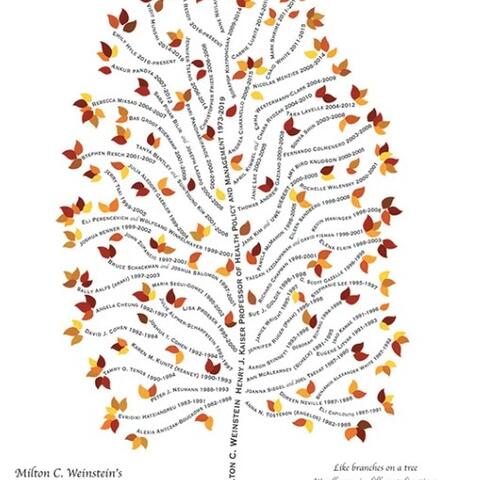
‘Mentoring Tree’ Continues to Bear Fruit
Alumni Milton Weinstein, Jane Kim, and Ankur Pandya—all faculty members at the Harvard T.H. Chan School of Public Health—share a deep commitment to decision science teaching and mentorship across the School and University.
Adverse Hospital Events and Outcomes With Private Equity Acquisition
A new study by alumni Joseph Bruch and Zirui Song reveals that private equity acquisition of hospitals, on average, was associated with increased hospital-acquired adverse events, suggesting poorer quality of inpatient care.

Subtle Changes Give Virus Ability to Infect Humans
A new study by HMS Professor Jonathan Abraham, PhD '10, and student Wanyu Li unravels the mechanisms through which western equine encephalitis infects humans and links changes to a reduction in illness and deaths.
How Gratitude Calms the Craving Mind
New research from a team that includes Ke Wang, PhD '24, and Charles Dorison, PhD, '20, reveals that positive emotions like gratitude could reduce appetitive risk behaviors like cigarette smoking—a leading cause of preventable death globally.
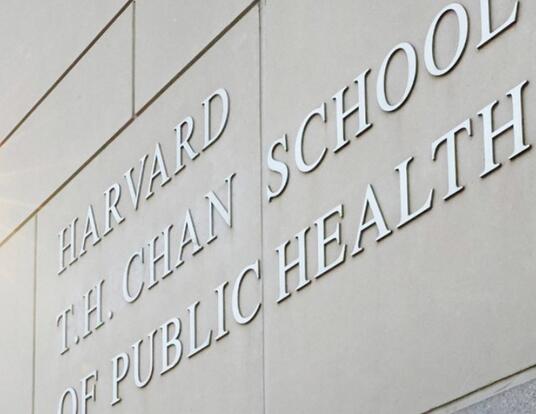
- College of Arts & Sciences
- Graduate Division
- College of Liberal and Professional Studies

Graduate Program
Graduate Chair: Wendy D. Roth
Graduate Coordinator: Kailey Caldwell
Graduate work at the University of Pennsylvania is conducted through graduate groups formed according to different areas of study. These groups administer programs leading to the AM and PhD degrees. Those seeking a graduate degree in Sociology should apply to the Graduate Group in Sociology. Sociology students earn their MA on the way to the PhD. There is no terminal Master's degree program.
It is possible to earn a joint Ph.D. in Sociology and another discipline by being admitted to and satisfying the requirements of two Ph.D. programs and writing a single dissertation. Currently, students are enrolled in joint degrees with Demography, Education, Communications, and Africana Studies. Students seeking a joint Ph.D. combining Sociology with another program must be admitted in that program (as well as Sociology); admittance to the second program may occur after admission to the Sociology program.
Dual or joint degrees must be sought with the consultation of the Chair of the Graduate Group in Sociology and the Dean of the Graduate Division, School of Arts and Sciences. For admission information for the Department's PhD program or to direct questions to the Graduate Chair, interested parties should contact the Graduate Coordinator.
- Application Information for Prospective Students
- Program Requirements
- List of Current Students
- Students on the Job Market
- How to Apply for Funding to Give a Paper
- Links for Sociology Graduate Students
- Graduate Student Life at Penn
For further information contact Kailey Caldwell : [email protected]
© 2024 The Trustees of the University of Pennsylvania
Report Accessibility Issues and Get Help

- October 11, 2023
- Education Advice
Ph.D. vs. Doctorate: What are the Differences?
UOTP Marketing

For those who have a deep-seated attitude, pursuing a doctoral degree can be a tough yet beneficial journey. Currently enrolled in a doctorate program means that a person has already scooched over college admissions, went through high stake tests and exams, and finished all those research papers and long hours spent in university libraries hitting the books. While studying for a doctorate entails asserting oneself to an extensive amount of quality time and money , its significance and purpose usually pave the way to a lucrative end.
After having finished the Master’s Degree , students begin to think about their next step in their academic career. Then, paradoxically, while navigating through academia, they find themselves baffled by the immense terms and terminologies used to label specific degrees. Because the terms “Doctorate” and “Ph.D.” are somehow interlocked and overlap, and because “PhD” is sometimes used inconsistently, it can lead to considerable confusion. Ph.D. vs. Doctorate? You might wonder what their difference is, and why they are important. E xplaining what each of these terms stands for, the difference between them, and why they are valuable, can help you steer yourself down the right path from the outset.
Doctorate Degree vs. Ph.D.

At first glance, it is pretty easy to confuse these two terms. But it is important for everyone to be able to make a distinction between the two. In this article, we will discuss the difference between Ph.D. and Doctorate in detail in order to get rid of any confusion you may have. In the academic world, the terms Doctorate and Ph.D. are currently used interchangeably. Both of them are the top cap of the ladder. However, a doctorate is mostly used as an umbrella term covering many fields ranging from professional degrees, humanities, and scientific disciplines.
A Ph.D. or Doctor of Philosophy, on the other hand, is a subcategory of a doctoral degree, it is much more distinct and clear-cut and is usually narrower in nature encompassing only humanities and scientific fields. In plain English, when someone says they are enrolling on a doctoral degree, it means they are doing a Ph.D. in a specific field. So, technically, in common parlance, there is no difference between the two terms.
But at the other end of the spectrum, one should be careful not to confuse a professional doctoral degree with a Ph.D. The former is more practical and is designed to prepare students to apply existing knowledge to find solutions to real-life problems and has a direct application to a particular profession.
A Ph.D. is theoretical by nature and is more academic and research-focused. it is often fixed on disseminating knowledge by conducting authentic research which means reviewing and identifying gaps in current literature and evaluating the relevance of existing and emerging theories within a particular field.
What Is a Ph.D. Degree and Why Should You Go for It?
Students who acquire a Ph.D. are justly proud — they wear it as a badge of identity in the academic elite. Traditionally, a Ph.D. was associated with teaching, which from Latin licentia docendi meant “license to teach”. However, the concept of Ph.D. has been on shifting sands nowadays and has become a more general term that isn’t necessarily confined to teaching only.
The Value of a PhD

Obtaining a Ph.D. helps you capitalize on the emerging academic opportunities making you more easily identifiable to employers or businesses seeking to fill professional, higher-level job positions. Many of these career options, conversely, are not available to those who do not belong to the Ph.D. club. While pursuing a Ph.D. requires devoting a tremendous effort and time and making significant personal sacrifices pushing the boundaries of knowledge, it’s all in service of the area of study you’re most passionate and zealous about. Ultimately, once you’ve attained your Ph.D., you will have achieved the pinnacle of education— something not too many people have or are able to accomplish.
FREE RESOURCE

A Guide to Choosing and Applying to Ph.D. Programs
Learn everything you need to know about selecting and applying to Ph.D. programs. Learn tips and tricks for a successful application and find your ideal program today!
What Is a Doctorate Degree?
A doctoral or doctorate degree is usually the most advanced degree one can earn in an academic discipline. Many pursue a doctorate degree to increase their professional credibility, be acknowledged as an expert in a specific field, and improve their resume.
A doctorate degree is a graduate-level credential that is usually earned after multiple years of graduate school. Earning a doctoral degree requires a significant level of research and work. In order to get this degree, one has to research a subject thoroughly, conduct new research and analysis, and provide a solution or interpretation into the field. But what types of doctoral degrees are available?
Types of Doctorate Degrees
There are two categories of doctorate degrees: an academic degree and a professional doctorate degree. An academic degree focuses on research, data analysis, and the evaluation of theory. A professional doctorate degree, on the other hand, is considered a terminal degree, which means that one has achieved the most advanced degree in the field. This degree is specifically designed for working professionals who want to grow in their careers.
Professional Doctorate Degrees
A professional doctorate is designed for working professionals who have experience in the field and want to increase their knowledge, improve their credibility, and advance their careers. This degree focuses on applying research to practical issues, coming up with interpretation and solutions, as well as designing effective professional practices within a particular field.
Professional doctoral degrees include:
Doctor of Business Administration (DBA)
The DBA degree is ideal for students who already have a general business background and are interested in delving deeper into the practical and theoretical aspects that underpin business education. More to the point, in DBA you will develop the ability to solve real-life problems, discover the relevant expertise to innovate and uphold complex business issues and so much more. Upon completion, DBA students will possess enhanced leadership and strategic skills as well as the tools to propel their careers in today’s marketplace. The Business Administration industry is keen on finding such graduates with business skills and this is indicated by the immense job positions currently available.
Doctor of Education (Ed.D.)
If you are interested in setting your eyes on creating lifelong learning among your students, making a positive influence in educational culture, contributing to the growing body of research in the education realm , or just enhancing your subject matter expertise, the Doctor of Education program ticks all the boxes. This degree maintains a rigorous approach in academic education that prepares graduates to showcase the skills and expertise to devise solutions in tackling the challenges in contemporary education practice and become transformational leaders in the industry.
Doctor of Computer Science (DCS)
The demand for computer scientists has reached its peak and it is among the most sought-after positions nowadays. With a degree in DCS, you will have the opportunity to design, apply innovative experiments, predict trends and, ultimately, develop a richer understanding and contribute to your area of expertise. After all, who doesn’t want an exciting and financially stable career?
Interested in pursuing a degree?
Fill out the form and get all admission information you need regarding your chosen program.
This will only take a moment.
Message Received!
Thank you for reaching out to us. we will review your message and get right back to you within 24 hours. if there is an urgent matter and you need to speak to someone immediately you can call at the following phone number:.
By clicking the Send me more information button above, I represent that I am 18+ years of age, that I have read and agreed to the Terms & Conditions and Privacy Policy , and agree to receive email marketing and phone calls from UOTP. I understand that my consent is not required to apply for online degree enrollment. To speak with a representative without providing consent, please call +1 (202) 274-2300
- We value your privacy.
Doctor of Medicine (M.D.)
The Doctor of Medicine degree is designed to prepare you for various medical challenges in different settings nationally and internationally. This program will further develop your critical thinking and clinical reasoning skills required for safe, high-quality medical practices. It will also improve your leadership, communication, and teamwork skills for collaborative patient care.
Doctor of Optometry (O.D.)
This professional degree typically requires four years of study. It focuses on basic biological sciences such as anatomy and physiology, microbiology, neuroanatomy, and so on. This doctoral degree will prepare, educate, and train professionals to practice at the highest level of proficiency, professionalism, and integrity.
Doctor of Psychology (PsyD)
The Doctoral of Psychology degree concentrates on the clinical and applied aspects of psychology. This type of doctorate prepares students for professional practice and clinical placement. This degree will be highly beneficial when working directly with patients who need psychology services. In addition, this degree allows doctors of psychology to confidently function as researchers and clinicians.
How to Choose a Ph.D. Program?
Choosing a Ph.D. program can be pretty challenging; it is a big academic decision and investment that requires commitment and perseverance. But how can you pick the right Ph.D. program for you? Well, there are some tips to help you choose the best fit for your goals and preferences:
- Think about the reasons why you want a Ph.D., what you expect to gain from it, and whether it is compatible with your professional goals.
- Consider your research environment.
- Take your time to research, compare, and consider multiple opportunities carefully.
- Pick a subject that interests and motivates you but is also practical.
- Ask your professors and other scholars in the field for advice.
All in all, the terms “Doctorate’’ and “Ph.D.” are in essence the same, which means all Ph.D. students are Doctoral students as well. On the other hand, earning a Ph.D. degree is no joke. If anything, Ph.D. students have the tenacity, patience, persistence, and years of hard work that you can vouch for. Ultimately, deciding what type of doctoral degree you should hop on, depends on your career goals, what you are passionate about and how you are going to achieve it.
Frequently Asked Questions
What is the difference between a doctorate and a ph.d..
In academic contexts, the terms “Doctorate” and “Ph.D.” are often used interchangeably, but there is a distinction. A Doctorate is an umbrella term covering a wide range of fields, including professional degrees, humanities, and scientific disciplines. A Ph.D., or Doctor of Philosophy, is a specific type of doctoral degree, typically focused on research and academic pursuits in the humanities and scientific fields.
Why should I pursue a Ph.D.?
Pursuing a Ph.D. can be a valuable endeavor, as it opens up academic and research opportunities, enhances your expertise in a specific field, and makes you more attractive to employers seeking candidates for high-level positions. It’s a chance to push the boundaries of knowledge and become an expert in your chosen study area.
What are the benefits of a professional doctorate?
Professional doctorate degrees, such as Doctor of Business Administration (DBA) or Doctor of Education (Ed.D.), are designed for working professionals who want to apply research to practical issues in their field. These degrees can enhance your career prospects, leadership skills, and problem-solving abilities within your profession.
How do I choose the right Ph.D. program?
To choose the right Ph.D. program, consider your career goals, research environment, and personal interests. Take your time to research and compare programs, seek advice from professors and experts in your field, and ensure that the program aligns with your professional aspirations.
What are the main differences between academic and professional doctorate degrees?
Academic doctorate degrees focus on research, theory evaluation, and data analysis, often leading to careers in academia or research. Professional doctorate degrees are more practical, designed for working professionals, and concentrate on applying research to real-world problems within a specific field.
Can I earn a Ph.D. in any field?
Ph.D. programs are available in various fields, including humanities, social sciences, natural sciences, engineering, and more. However, the specific availability of Ph.D. programs may vary by field and university.

Is a Ph.D. a challenging journey?
Yes, pursuing a Ph.D. can be a challenging journey that requires dedication, patience, and years of hard work. It involves conducting original research, writing a dissertation, and often teaching or assisting in courses. It’s a significant commitment, but it can be highly rewarding.
What are the potential career opportunities after earning a Ph.D.?
With a Ph.D., you can pursue careers in academia as a professor or researcher, work in research and development roles in various industries, or take on leadership positions in organizations. The specific career path will depend on your field of study and personal interests.
Share it with your friends!
Explore more.

Accounting vs. Finance Degree: Which Major to Choose?

12 Important Bookkeeping Skills You Need for a Successful Career
Recent resources.

How Long Does It Take to Become a Full-Stack Developer?

14 Essential Web Developer Skills You Need to Master

How to Become a Software Developer?

10 Essential Cybersecurity Skills You Must Have
INTERESTED IN LEARNING MORE?
Chat with an Admissions Officer Now!

- Associates Degree
- Bachelors Degrees
- Masters Degrees
- Doctoral Degrees
- Faculty & Staff
- Accreditation
- Student Experience
QUICK LINKS
- Admission Requirements
- Military Students
- Financial Aid
Public Planning of freight transport in logistically complicated small cities

14 August 2024 11:59
- Shipping, transport and logistics
On Friday 30 August 2024 Cosku Can Orhan will hold a trial lecture on a prescribed topic and defend his thesis for the PhD degree at NHH.
The growth in urban populations and e-commerce has resulted in a higher volume of deliveries, an increased demand for faster shipping services, and more frequent delivery failures in cities.
Consequently, there is more traffic and higher energy consumption, which can negatively impact residents' living conditions unless properly planned for. Public authorities may intervene in the operations of freight carriers to mitigate their impact on urban environments through regulations or incentives that promote sustainable practices.
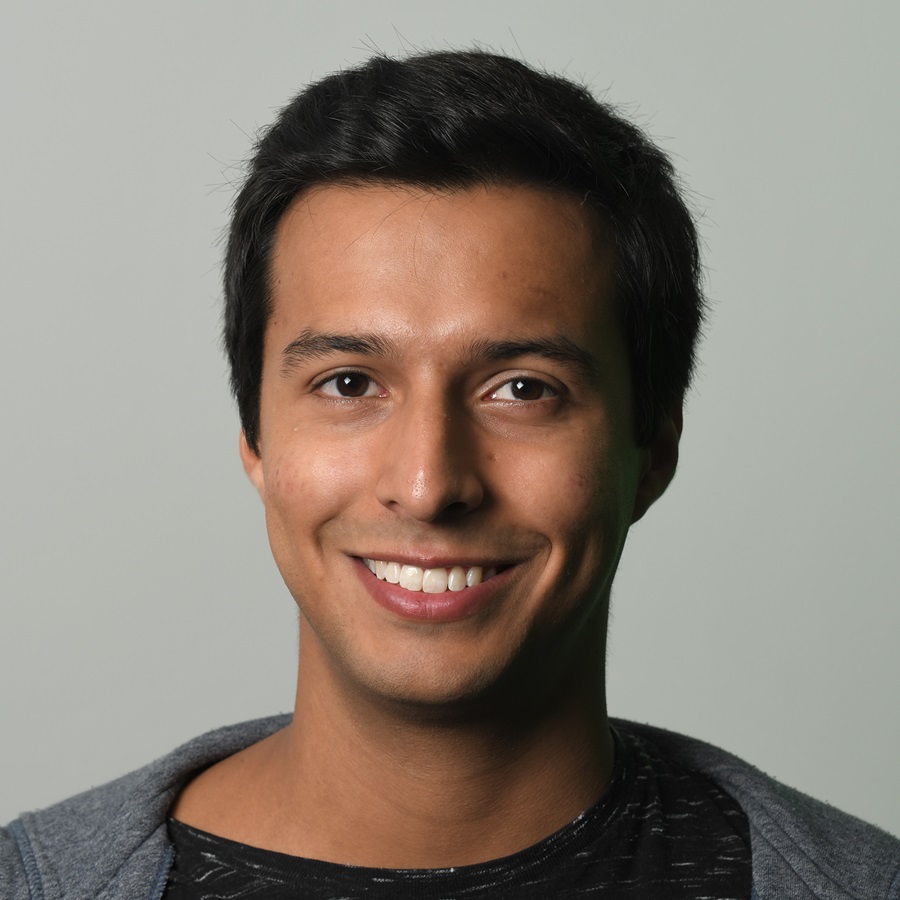
How and when group identity affects economic behavior
However, authorities often lack the specific knowledge required to analyse carriers’ operations and implement corresponding measures.
This challenge is particularly pressing for authorities in small European cities. These authorities must navigate logistically complex landscapes characterised by medieval structures, narrow roads, and limited parking spaces.
Cosku Can Orhan ´s thesis originates from this context and aims to bridge the knowledge gap between public planning and freight transport in small, logistically complicated cities.
Prescribed topic for the trial lecture:
Trial lecture:.
Karl Borch, NHH, 10:15
Title of the thesis:
«Public Planning of Freight Transport in Logistically Complicated Small Cities»
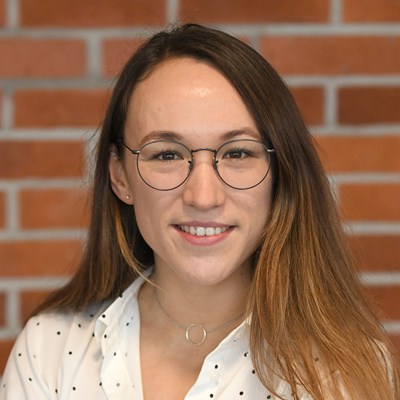
Essays in Industrial Organization of Spatially Differentiated Markets
Karl Borch, NHH, 12:15
Members of the evaluation committee:
Associate Professor Sigrid-Lise Nonås (leader), Department of Business and Management Science, NHH
Professor Lei Zhao, Tsinghua University in Beijing
Professor Vincenzina Messina, University of Milan-Bicocca
Supervisors:
Professor Stein Wallace (main supervisor), Department of Business and Management Science, NHH
Professor Mario Guajardo, Department of Business and Management Science, NHH
Associate Professor Julio Cesar Goez, Department of Business and Management Science, NHH
The trial lecture and thesis defense will be open to the public.
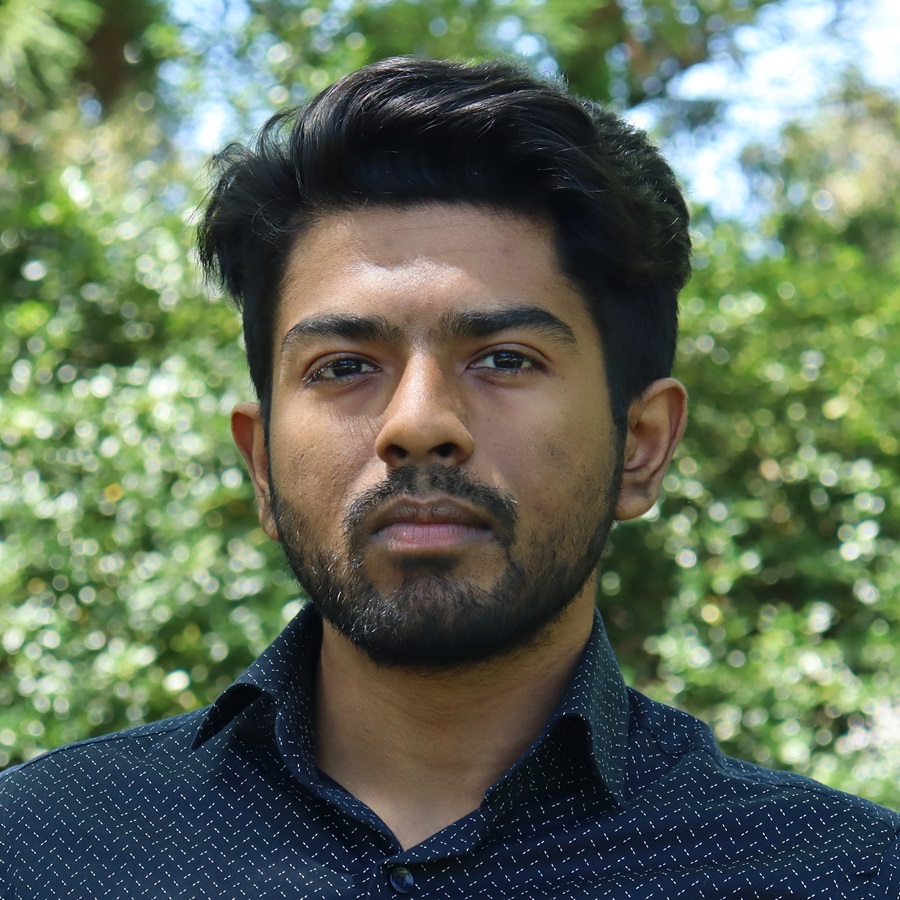
Essays in Moral Decisions
- Share on Facebook
- Share on Twitter
- Share on LinkedIn
- Share by e-mail

Finding a PhD
Discover the best places to search for your PhD, learn what you should look for and how to approach a potential supervisor for enquires.
Key Resources

Find Your Perfect PhD
Your PhD starts here. Search our database of available projects and read expert advice on finding, applying for and doing a PhD.
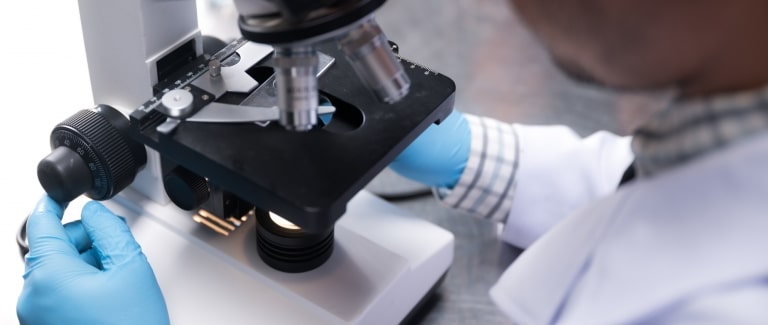
Is Doing a PhD Worth It?
Find out how a PhD can benefit you, from improved career prospects to transferable skills and entry into higher education teaching roles.
Supporting Resources

PhD in USA – A Guide for 2024/25
A PhD in USA takes 5-6 years, costs between $12-45k per year and has a different structure to UK and EU PhDs. Find out if a US PhD is for you!

How to Choose a PhD Research Topic
From reading publications, talking to supervisors and using your career plans, read our guidance on choosing the right PhD Research Topic for you.
Gain valuable insight from our collection of exclusive interviews with both current and past PhD students. Learn from their best advice, personal challenges and career path after completing their doctorate.
Secondary Menu
Cmac phd program information session, speaker(s): victoria szabo, director of graduate studies and select faculty members..
The Computational Media, Arts & Cultures (CMAC) PhD Program will host a Zoom Webinar for prospective applicants on Thursday, 22 August 2024 from 11:30AM-12:30PM EDT.
Sign up here
to register attend the Webinar
Zoom Webinar
- Outlook.com
- iCal / MS Outlook
- CMAC Brochure
- PhD Program Background
- Our Facility
- Digital Humanities at the John Hope Franklin Humanities Institute
- IDM Major & Minor Requirements
- Computational Media IDM Advising Form
- Undergraduate Certificate in Information Science + Studies
- Grading and Evaluation
- Assistantships
- Progress Report
- Language Requirements
- RCR Training
- Practice Projects
- Preliminary Exam
- Dissertation
- Time Limits
- Sample Courses
- PhD Mentoring and Climate/Culture
- Program Requirements
- Advising and Thesis Committee
- Thesis Proposal Outline
- Thesis Guidelines
- Thesis Defense
- Graduate Certificate
- Living in Durham
- Apply to the MA or PhD Program
- All Courses
- Independent Study and Lab Practicum
- Below 500 Level Courses for Graduate Students
- Core Graduate Faculty
- Affiliated Faculty
- Technical and Research Consultants
- Franklin Humanities Institute Partners
- Graduate Students
- For Current Students
- Assisting Duke Students
- Biochemistry and Molecular Biology
- Biostatistics
- Environmental Health and Engineering
- Epidemiology
- Health Policy and Management
- Health, Behavior and Society
- International Health
- Mental Health
- Molecular Microbiology and Immunology
- Population, Family and Reproductive Health
- Program Finder
- Admissions Services
- Course Directory
- Academic Calendar
- Hybrid Campus
- Lecture Series
- Convocation
- Strategy and Development
- Implementation and Impact
- Integrity and Oversight
- In the School
- In the Field
- In Baltimore
- Resources for Practitioners
- Articles & News Releases
- In The News
- Statements & Announcements
- At a Glance
- Student Life
- Strategic Priorities
- Inclusion, Diversity, Anti-Racism, and Equity (IDARE)
- What is Public Health?
Amanda C. Palmer , PhD

Departmental Affiliations
Center & institute affiliations.
Center for Human Nutrition
Amanda Palmer, PhD ’11, MHS ’06, studies interventions that may help to improve nutrition and protect the health of infants and children in low- and middle-income countries.
Contact Info
Research interests.
international nutrition; vitamin A; biofortification; supplementation; developmental programming; immune function; child survival
The broad goal of my research is to improve maternal, infant, and child health in low- and middle-income countries. There have been tremendous improvements in child survival over the past quarter of a century. Where we have seen the most marked improvements, deaths are increasingly concentrated during the neonatal period, requiring greater consideration of the maternal/infant dyad. In areas that have failed to meet child survival goals, there is a continued need for new public health strategies, scale-up of evidence-based interventions, implementation research, and adequate monitoring. My research spans this full spectrum—focusing primarily on nutrition as the major underlying cause of child deaths—including: a) mechanistic work regarding the complex interplay between nutrition and immune function, b) evaluating public health interventions, and c) informing public health policies and programs for mothers, infants, and children.
2020 Recognition for Excellence in Teaching, Johns Hopkins Bloomberg School of Public Health 2018 Recognition for Excellence in Teaching, Johns Hopkins Bloomberg School of Public Health 2011 American Society for Nutrition - Student Prize Finalist 2010 Harry D. Kruse Publication Award in Human Nutrition 2008 Procter and Gamble Doctoral Fellowship 2008 Student Assembly Teaching Assistant Recognition Award 2006 Academic Achievement Award, Program in Human Nutrition
Selected first author publications
Palmer AC, Bedsaul-Fryer JR, Stephensen CB. Interactions of Nutrition and Infection: The Role of Micronutrient Deficiencies in the Immune Response to Pathogens and Implications for Child Health. Annu Rev Nutr. 2024. doi: 10.1146/annurev-nutr-062122-014910.
Pasqualino MM, Shaikh S, McGready J, Islam MT, Ali H, Ahmed T, et al. An Egg Intervention Improves Dietary Intakes but Does Not Fill Intake Gaps for Multiple Micronutrients among Infants in Rural Bangladesh. J Nutr. 2023;153(4):1199-210.
Palmer AC, Jobarteh ML, Chipili M, Greene MD, Oxley A, Lietz G, Mwanza R, Haskell MJ. Biofortified and fortified maize consumption reduces prevalence of low milk retinol, but does not increase vitamin A stores of breastfeeding Zambian infants with adequate reserves: a randomized controlled trial. Am J Clin Nutr. 2021 May 8;113(5):1209-1220.
Palmer AC, Schulze KJ, Khatry SK, West KP. Prenatal and childhood exposures are associated with thymulin concentrations in young adolescent children in rural Nepal. J Dev Orig Health Dis 2019:1-9.
Palmer AC, West Jr KP, Dalmiya N, Schultink W. The use and interpretation of serum retinol distributions in evaluating the public health impact of vitamin A programs. Public Health Nutr 2012; 15(7):1201-1215.

Profile | Who is Rachael Gunn? Paris Olympics’ Australian breakdancer who became internet meme
- In videos of her performances shared online, B-Girl Raygun was seen hopping around like a kangaroo and touching her toes while lying down

Among the various breakers competing in the Paris Olympics, one in particular has taken the internet by storm: Australia’s Rachael Gunn.
In videos of her performances shared online, B-Girl Raygun was seen hopping around like a kangaroo, touching her toes while lying down and seemingly squirming around on the dance floor.
Netizens were quick to pick up on Gunn’s unusual moves and catapulted her to internet fame with thousands memes.
But who is she? Let’s take a look.
Early years

Born in Hornsby in New South Wales, Gunn was a former jazz and ballroom dancer. She was introduced to breaking by the man she later married, who had been practising for 10 years.
Although Gunn grew up dancing, she did not start competing in breaking competitions until her mid-twenties.
“I wasn’t a sporty kid, I was more of a dance kid,” Gunn had said. “I never thought the Olympics would be on the cards for me. It’s such a privilege and it’s hugely exciting.”
Breakdancing career
Gunn graduated university with her PHD thesis focusing on ‘the intersection of gender and Sydney’s breaking culture’ in 2017.
By 2020, Gunn worked her way up to become the Australian Breaking Association’s top ranked B-Girl.
She took part at the World Breaking Championships in Paris in 2021 and in Seoul 12 months later, and qualified for the Paris Games via the Oceania Championships in October 2023.
“I think a lot of people had doubted my ability to do it and maybe thought I was getting too old to be able to stay on top,” she said. “But I just kept pushing hard, I want to get better, and I want the scene to grow and get better.
Gunn’s experience had also influenced her beyond the dance floor as well.
She is a lecturer at the Department of Media, Communications, Creative Arts, Language and Literature at Macquarie University, where her biography states that she is an interdisciplinary and practice-based researcher interested in the cultural politics of breaking.
Internet fame
Despite Gunn’s experience in the discipline, her unique performance at the Paris Olympics quickly went viral on social media.
She finished the group phase with no points, which led many to question how she earned qualification.
Despite the jokes, Gunn defended her performance.
“I was never going to beat these girls on what they do best, the dynamic and the power moves, so I wanted to move differently, be artistic and creative because how many chances do you get in a lifetime to do that on an international stage?,” she said.
“I was always the underdog and wanted to make my mark in a different way.”
The memes drew an impassioned defence from Australia’s chef de mission Anna Meares as she hit out at “trolls and keyboard warriors”.
“If you don’t know Rachael’s story, in 2008, she was locked in a room crying, being involved in a male dominated sport as the only woman and it took great courage for her to continue on and fight for her opportunity to participate in a sport that she loved,” she said.
Meares noted that Gunn was the best female breakdancer the country had and was an “absolutely loved member” of the Olympic team.
Unfortunately we don't fully support your browser. If you have the option to, please upgrade to a newer version or use Mozilla Firefox , Microsoft Edge , Google Chrome , or Safari 14 or newer. If you are unable to, and need support, please send us your feedback .
We'd appreciate your feedback. Tell us what you think! opens in new tab/window
11 steps to structuring a science paper editors will take seriously
April 5, 2021 | 18 min read
By Angel Borja, PhD

Editor’s note: This 2014 post conveys the advice of a researcher sharing his experience and does not represent Elsevier’s policy. However, in response to your feedback, we worked with him to update this post so it reflects our practices. For example, since it was published, we have worked extensively with researchers to raise visibility of non-English language research – July 10, 2019
Update: In response to your feedback, we have reinstated the original text so you can see how it was revised. – July 11, 2019
How to prepare a manuscript for international journals — Part 2
In this monthly series, Dr. Angel Borja draws on his extensive background as an author, reviewer and editor to give advice on preparing the manuscript (author's view), the evaluation process (reviewer's view) and what there is to hate or love in a paper (editor's view).
This article is the second in the series. The first article was: "Six things to do before writing your manuscript."
When you organize your manuscript, the first thing to consider is that the order of sections will be very different than the order of items on you checklist.
An article begins with the Title, Abstract and Keywords.
The article text follows the IMRAD format opens in new tab/window , which responds to the questions below:
I ntroduction: What did you/others do? Why did you do it?
M ethods: How did you do it?
R esults: What did you find?
D iscussion: What does it all mean?
The main text is followed by the Conclusion, Acknowledgements, References and Supporting Materials.
While this is the published structure, however, we often use a different order when writing.
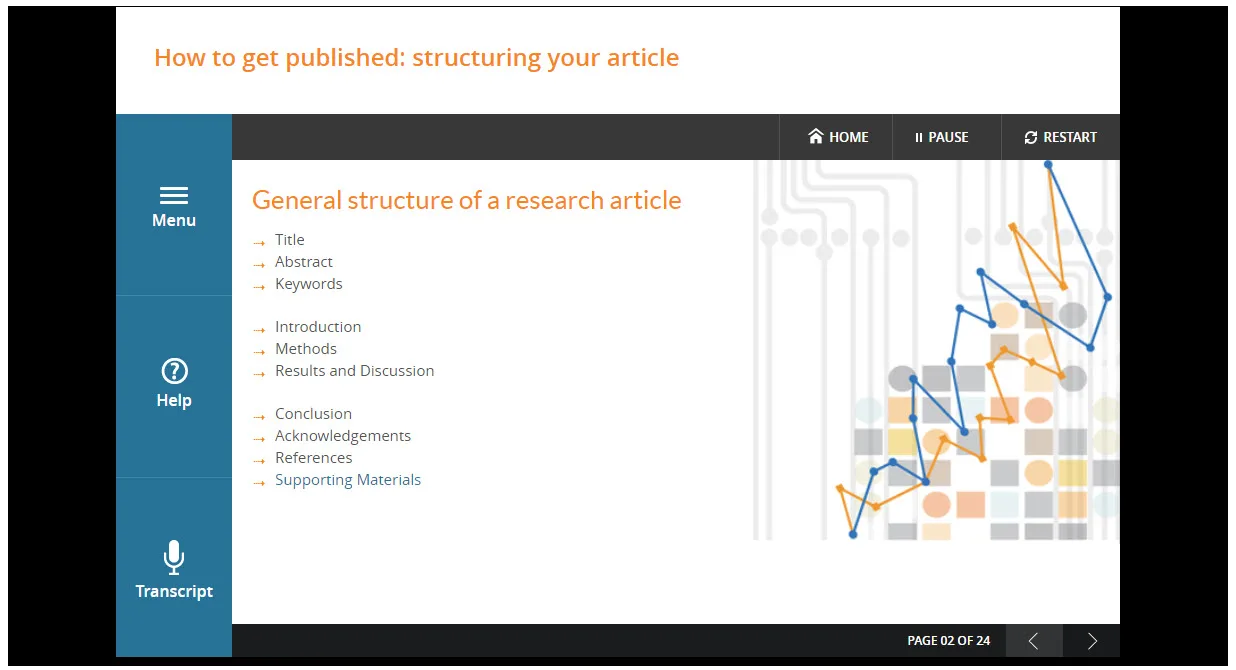
General strcuture of a research article. Watch a related tutorial on Researcher Academy opens in new tab/window .
Steps to organizing your manuscript
Prepare the figures and tables .
Write the Methods .
Write up the Results .
Write the Discussion . Finalize the Results and Discussion before writing the introduction. This is because, if the discussion is insufficient, how can you objectively demonstrate the scientific significance of your work in the introduction?
Write a clear Conclusion .
Write a compelling Introduction .
Write the Abstract .
Compose a concise and descriptive Title .
Select Keywords for indexing.
Write the Acknowledgements .
Write up the References .
Next, I'll review each step in more detail. But before you set out to write a paper, there are two important things you should do that will set the groundwork for the entire process.
The topic to be studied should be the first issue to be solved. Define your hypothesis and objectives (These will go in the Introduction.)
Review the literature related to the topic and select some papers (about 30) that can be cited in your paper (These will be listed in the References.)
Finally, keep in mind that each publisher has its own style guidelines and preferences, so always consult the publisher's Guide for Authors.
Step 1: Prepare the figures and tables
Remember that "a figure is worth a thousand words." Hence, illustrations, including figures and tables, are the most efficient way to present your results. Your data are the driving force of the paper, so your illustrations are critical!
How do you decide between presenting your data as tables or figures? Generally, tables give the actual experimental results, while figures are often used for comparisons of experimental results with those of previous works, or with calculated/theoretical values (Figure 1).

Figure 1. An example of the same data presented as table or as figure. Depending on your objectives, you can show your data either as table (if you wish to stress numbers) or as figure (if you wish to compare gradients).
Whatever your choice is, no illustrations should duplicate the information described elsewhere in the manuscript.
Another important factor: figure and table legends must be self-explanatory (Figure 2)
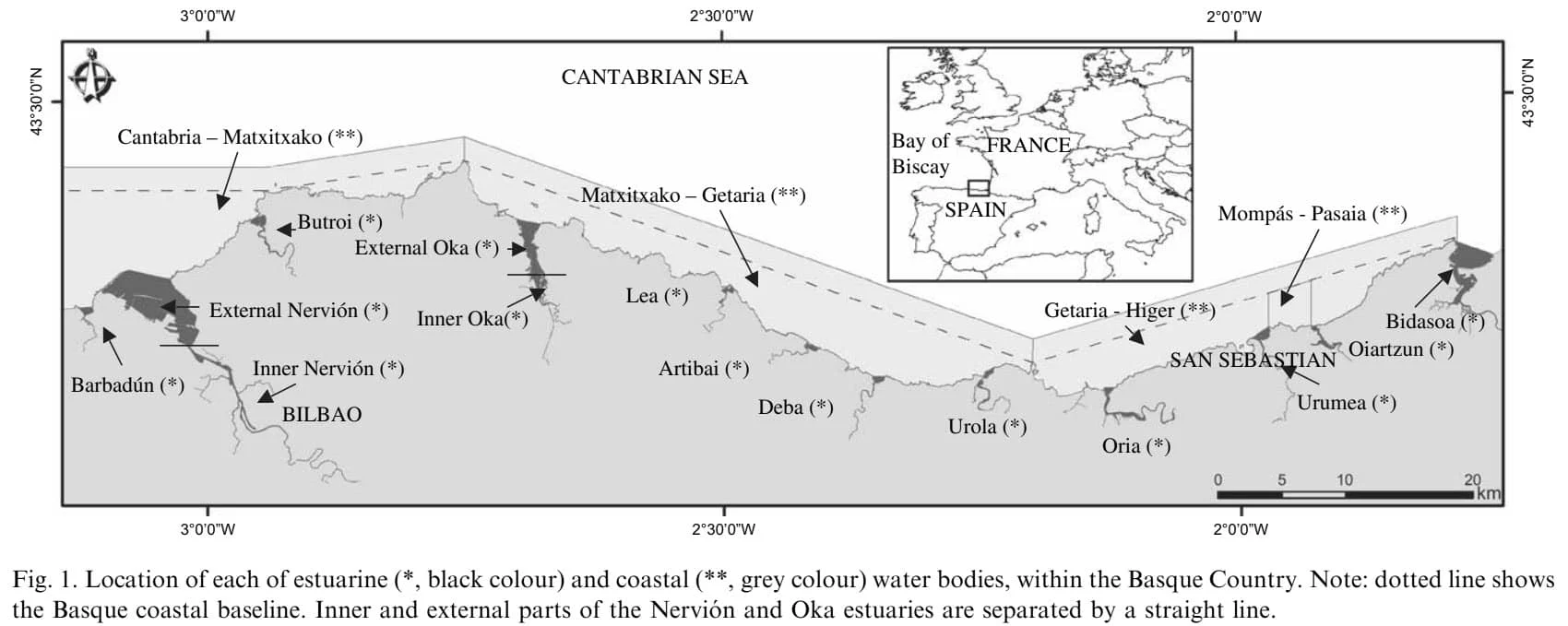
Figure 2. Figures must be self-explanatory.
When presenting your tables and figures, appearances count! To this end:
Avoid crowded plots (Figure 3), using only three or four data sets per figure; use well-selected scales.
Think about appropriate axis label size
Include clear symbols and data sets that are easy to distinguish.
Never include long boring tables (e.g., chemical compositions of emulsion systems or lists of species and abundances). You can include them as supplementary material.

Figure 3. Don't clutter your charts with too much data.
If you are using photographs, each must have a scale marker, or scale bar, of professional quality in one corner.
In photographs and figures, use color only when necessary when submitting to a print publication. If different line styles can clarify the meaning, never use colors or other thrilling effects or you will be charged with expensive fees. Of course, this does not apply to online journals. For many journals, you can submit duplicate figures: one in color for the online version of the journal and pdfs, and another in black and white for the hardcopy journal (Figure 4).

Figure 4. Using black and white can save money.
Another common problem is the misuse of lines and histograms. Lines joining data only can be used when presenting time series or consecutive samples data (e.g., in a transect from coast to offshore in Figure 5). However, when there is no connection between samples or there is not a gradient, you must use histograms (Figure 5).
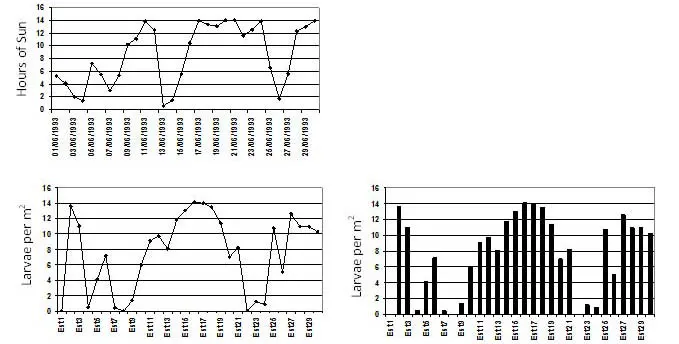
Figure 5. Use the right kind of chart for your data.
Sometimes, fonts are too small for the journal. You must take this into account, or they may be illegible to readers (Figure 6).

Figure 6. Figures are not eye charts - make them large enough too read
Finally, you must pay attention to the use of decimals, lines, etc.
Step 2: Write the Methods
This section responds to the question of how the problem was studied. If your paper is proposing a new method, you need to include detailed information so a knowledgeable reader can reproduce the experiment.
However, do not repeat the details of established methods; use References and Supporting Materials to indicate the previously published procedures. Broad summaries or key references are sufficient.
Reviewers will criticize incomplete or incorrect methods descriptions and may recommend rejection, because this section is critical in the process of reproducing your investigation. In this way, all chemicals must be identified. Do not use proprietary, unidentifiable compounds.
To this end, it's important to use standard systems for numbers and nomenclature. For example:
For chemicals, use the conventions of the International Union of Pure and Applied Chemistry opens in new tab/window and the official recommendations of the IUPAC–IUB Combined Commission on Biochemical Nomenclature opens in new tab/window .
For species, use accepted taxonomical nomenclature ( WoRMS: World Register of Marine Species opens in new tab/window , ERMS: European Register of Marine Species opens in new tab/window ), and write them always in italics.
For units of measurement, follow the International System of Units (SI).
Present proper control experiments and statistics used, again to make the experiment of investigation repeatable.
List the methods in the same order they will appear in the Results section, in the logical order in which you did the research:
Description of the site
Description of the surveys or experiments done, giving information on dates, etc.
Description of the laboratory methods, including separation or treatment of samples, analytical methods, following the order of waters, sediments and biomonitors. If you have worked with different biodiversity components start from the simplest (i.e. microbes) to the more complex (i.e. mammals)
Description of the statistical methods used (including confidence levels, etc.)
In this section, avoid adding comments, results, and discussion, which is a common error.
Length of the manuscript
Again, look at the journal's Guide for Authors, but an ideal length for a manuscript is 25 to 40 pages, double spaced, including essential data only. Here are some general guidelines:
Title: Short and informative
Abstract: 1 paragraph (<250 words)
Introduction: 1.5-2 pages
Methods: 2-3 pages
Results: 6-8 pages
Discussion: 4-6 pages
Conclusion: 1 paragraph
Figures: 6-8 (one per page)
Tables: 1-3 (one per page)
References: 20-50 papers (2-4 pages)
Step 3: Write up the Results
This section responds to the question "What have you found?" Hence, only representative results from your research should be presented. The results should be essential for discussion.
However, remember that most journals offer the possibility of adding Supporting Materials, so use them freely for data of secondary importance. In this way, do not attempt to "hide" data in the hope of saving it for a later paper. You may lose evidence to reinforce your conclusion. If data are too abundant, you can use those supplementary materials.
Use sub-headings to keep results of the same type together, which is easier to review and read. Number these sub-sections for the convenience of internal cross-referencing, but always taking into account the publisher's Guide for Authors.
For the data, decide on a logical order that tells a clear story and makes it and easy to understand. Generally, this will be in the same order as presented in the methods section.
An important issue is that you must not include references in this section; you are presenting your results, so you cannot refer to others here. If you refer to others, is because you are discussing your results, and this must be included in the Discussion section.
Statistical rules
Indicate the statistical tests used with all relevant parameters: e.g., mean and standard deviation (SD): 44% (±3); median and interpercentile range: 7 years (4.5 to 9.5 years).
Use mean and standard deviation to report normally distributed data.
Use median and interpercentile range to report skewed data.
For numbers, use two significant digits unless more precision is necessary (2.08, not 2.07856444).
Never use percentages for very small samples e.g., "one out of two" should not be replaced by 50%.
Step 4: Write the Discussion
Here you must respond to what the results mean. Probably it is the easiest section to write, but the hardest section to get right. This is because it is the most important section of your article. Here you get the chance to sell your data. Take into account that a huge numbers of manuscripts are rejected because the Discussion is weak.
You need to make the Discussion corresponding to the Results, but do not reiterate the results. Here you need to compare the published results by your colleagues with yours (using some of the references included in the Introduction). Never ignore work in disagreement with yours, in turn, you must confront it and convince the reader that you are correct or better.
Take into account the following tips:
Avoid statements that go beyond what the results can support.
Avoid unspecific expressions such as "higher temperature", "at a lower rate", "highly significant". Quantitative descriptions are always preferred (35ºC, 0.5%, p<0.001, respectively).
Avoid sudden introduction of new terms or ideas; you must present everything in the introduction, to be confronted with your results here.
Speculations on possible interpretations are allowed, but these should be rooted in fact, rather than imagination. To achieve good interpretations think about:
How do these results relate to the original question or objectives outlined in the Introduction section?
Do the data support your hypothesis?
Are your results consistent with what other investigators have reported?
Discuss weaknesses and discrepancies. If your results were unexpected, try to explain why
Is there another way to interpret your results?
What further research would be necessary to answer the questions raised by your results?
Explain what is new without exaggerating
Revision of Results and Discussion is not just paper work. You may do further experiments, derivations, or simulations. Sometimes you cannot clarify your idea in words because some critical items have not been studied substantially.
Step 5: Write a clear Conclusion
This section shows how the work advances the field from the present state of knowledge. In some journals, it's a separate section; in others, it's the last paragraph of the Discussion section. Whatever the case, without a clear conclusion section, reviewers and readers will find it difficult to judge your work and whether it merits publication in the journal.
A common error in this section is repeating the abstract, or just listing experimental results. Trivial statements of your results are unacceptable in this section.
You should provide a clear scientific justification for your work in this section, and indicate uses and extensions if appropriate. Moreover, you can suggest future experiments and point out those that are underway.
You can propose present global and specific conclusions, in relation to the objectives included in the introduction
Step 6: Write a compelling Introduction
This is your opportunity to convince readers that you clearly know why your work is useful.
A good introduction should answer the following questions:
What is the problem to be solved?
Are there any existing solutions?
Which is the best?
What is its main limitation?
What do you hope to achieve?
Editors like to see that you have provided a perspective consistent with the nature of the journal. You need to introduce the main scientific publications on which your work is based, citing a couple of original and important works, including recent review articles.
However, editors hate improper citations of too many references irrelevant to the work, or inappropriate judgments on your own achievements. They will think you have no sense of purpose.
Here are some additional tips for the introduction:
Never use more words than necessary (be concise and to-the-point). Don't make this section into a history lesson. Long introductions put readers off.
We all know that you are keen to present your new data. But do not forget that you need to give the whole picture at first.
The introduction must be organized from the global to the particular point of view, guiding the readers to your objectives when writing this paper.
State the purpose of the paper and research strategy adopted to answer the question, but do not mix introduction with results, discussion and conclusion. Always keep them separate to ensure that the manuscript flows logically from one section to the next.
Hypothesis and objectives must be clearly remarked at the end of the introduction.
Expressions such as "novel," "first time," "first ever," and "paradigm-changing" are not preferred. Use them sparingly.
Step 7: Write the Abstract
The abstract tells prospective readers what you did and what the important findings in your research were. Together with the title, it's the advertisement of your article. Make it interesting and easily understood without reading the whole article. Avoid using jargon, uncommon abbreviations and references.
You must be accurate, using the words that convey the precise meaning of your research. The abstract provides a short description of the perspective and purpose of your paper. It gives key results but minimizes experimental details. It is very important to remind that the abstract offers a short description of the interpretation/conclusion in the last sentence.
A clear abstract will strongly influence whether or not your work is further considered.
However, the abstracts must be keep as brief as possible. Just check the 'Guide for authors' of the journal, but normally they have less than 250 words. Here's a good example on a short abstract opens in new tab/window .
In an abstract, the two whats are essential. Here's an example from an article I co-authored in Ecological Indicators opens in new tab/window :
What has been done? "In recent years, several benthic biotic indices have been proposed to be used as ecological indicators in estuarine and coastal waters. One such indicator, the AMBI (AZTI Marine Biotic Index), was designed to establish the ecological quality of European coasts. The AMBI has been used also for the determination of the ecological quality status within the context of the European Water Framework Directive. In this contribution, 38 different applications including six new case studies (hypoxia processes, sand extraction, oil platform impacts, engineering works, dredging and fish aquaculture) are presented."
What are the main findings? "The results show the response of the benthic communities to different disturbance sources in a simple way. Those communities act as ecological indicators of the 'health' of the system, indicating clearly the gradient associated with the disturbance."
Step 8: Compose a concise and descriptive title
The title must explain what the paper is broadly about. It is your first (and probably only) opportunity to attract the reader's attention. In this way, remember that the first readers are the Editor and the referees. Also, readers are the potential authors who will cite your article, so the first impression is powerful!
We are all flooded by publications, and readers don't have time to read all scientific production. They must be selective, and this selection often comes from the title.
Reviewers will check whether the title is specific and whether it reflects the content of the manuscript. Editors hate titles that make no sense or fail to represent the subject matter adequately. Hence, keep the title informative and concise (clear, descriptive, and not too long). You must avoid technical jargon and abbreviations, if possible. This is because you need to attract a readership as large as possible. Dedicate some time to think about the title and discuss it with your co-authors.
Here you can see some examples of original titles, and how they were changed after reviews and comments to them:
Original title: Preliminary observations on the effect of salinity on benthic community distribution within a estuarine system, in the North Sea
Revised title: Effect of salinity on benthic distribution within the Scheldt estuary (North Sea)
Comments: Long title distracts readers. Remove all redundancies such as "studies on," "the nature of," etc. Never use expressions such as "preliminary." Be precise.
Original title: Action of antibiotics on bacteria
Revised title: Inhibition of growth of Mycobacterium tuberculosis by streptomycin
Comments: Titles should be specific. Think about "how will I search for this piece of information" when you design the title.
Original title: Fabrication of carbon/CdS coaxial nanofibers displaying optical and electrical properties via electrospinning carbon
Revised title: Electrospinning of carbon/CdS coaxial nanofibers with optical and electrical properties
Comments: "English needs help. The title is nonsense. All materials have properties of all varieties. You could examine my hair for its electrical and optical properties! You MUST be specific. I haven't read the paper but I suspect there is something special about these properties, otherwise why would you be reporting them?" – the Editor-in-Chief.
Try to avoid this kind of response!
Step 9: Select keywords for indexing
Keywords are used for indexing your paper. They are the label of your manuscript. It is true that now they are less used by journals because you can search the whole text. However, when looking for keywords, avoid words with a broad meaning and words already included in the title.
Some journals require that the keywords are not those from the journal name, because it is implicit that the topic is that. For example, the journal Soil Biology & Biochemistry requires that the word "soil" not be selected as a keyword.
Only abbreviations firmly established in the field are eligible (e.g., TOC, CTD), avoiding those which are not broadly used (e.g., EBA, MMI).
Again, check the Guide for Authors and look at the number of keywords admitted, label, definitions, thesaurus, range, and other special requests.
Step 10: Write the Acknowledgements
Here, you can thank people who have contributed to the manuscript but not to the extent where that would justify authorship. For example, here you can include technical help and assistance with writing and proofreading. Probably, the most important thing is to thank your funding agency or the agency giving you a grant or fellowship.
In the case of European projects, do not forget to include the grant number or reference. Also, some institutes include the number of publications of the organization, e.g., "This is publication number 657 from AZTI-Tecnalia."
Step 11: Write up the References
Typically, there are more mistakes in the references than in any other part of the manuscript. It is one of the most annoying problems, and causes great headaches among editors. Now, it is easier since to avoid these problem, because there are many available tools.
In the text, you must cite all the scientific publications on which your work is based. But do not over-inflate the manuscript with too many references – it doesn't make a better manuscript! Avoid excessive self-citations and excessive citations of publications from the same region.
As I have mentioned, you will find the most authoritative information for each journal’s policy on citations when you consult the journal's Guide for Authors. In general, you should minimize personal communications, and be mindful as to how you include unpublished observations. These will be necessary for some disciplines, but consider whether they strengthen or weaken your paper. You might also consider articles published on research networks opens in new tab/window prior to publication, but consider balancing these citations with citations of peer-reviewed research. When citing research in languages other than English, be aware of the possibility that not everyone in the review process will speak the language of the cited paper and that it may be helpful to find a translation where possible.
You can use any software, such as EndNote opens in new tab/window or Mendeley opens in new tab/window , to format and include your references in the paper. Most journals have now the possibility to download small files with the format of the references, allowing you to change it automatically. Also, Elsevier's Your Paper Your Way program waves strict formatting requirements for the initial submission of a manuscript as long as it contains all the essential elements being presented here.
Make the reference list and the in-text citation conform strictly to the style given in the Guide for Authors. Remember that presentation of the references in the correct format is the responsibility of the author, not the editor. Checking the format is normally a large job for the editors. Make their work easier and they will appreciate the effort.
Finally, check the following:
Spelling of author names
Year of publications
Usages of "et al."
Punctuation
Whether all references are included
In my next article, I will give tips for writing the manuscript, authorship, and how to write a compelling cover letter. Stay tuned!
References and Acknowledgements
I have based this paper on the materials distributed to the attendees of many courses. It is inspired by many Guides for Authors of Elsevier journals. Some of this information is also featured in Elsevier's Publishing Connect tutorials opens in new tab/window . In addition, I have consulted several web pages: https://owl.english.purdue.edu/owl/ opens in new tab/window , www.physics.ohio-state.edu/~wilkins/writing/index.html.
I want to acknowledge Dr. Christiane Barranguet opens in new tab/window , Executive Publisher of Aquatic Sciences at Elsevier, for her continuous support. And I would like to thank Dr. Alison Bert, Editor-in-Chief of Elsevier Connect; without her assistance, this series would have been impossible to complete.
Contributor

Angel Borja, PhD
Get the Reddit app
This subreddit is dedicated to Team Fortress 2, created by Valve Corporation in 2007. After nine years in development, hopefully it was worth the wait.
What are the Engineer's PhDs?
It is said that the Engineer has 11 PhD according to the TF2 Wikia. I was wondering what PhDs did he get to create such machines that can build themeselves?
By continuing, you agree to our User Agreement and acknowledge that you understand the Privacy Policy .
Enter the 6-digit code from your authenticator app
You’ve set up two-factor authentication for this account.
Enter a 6-digit backup code
Create your username and password.
Reddit is anonymous, so your username is what you’ll go by here. Choose wisely—because once you get a name, you can’t change it.
Reset your password
Enter your email address or username and we’ll send you a link to reset your password
Check your inbox
An email with a link to reset your password was sent to the email address associated with your account
Choose a Reddit account to continue
- UB Directory
- Office of the Provost >
- Communications from the Provost >
UB MBA ranked No. 11 in the U.S. for return on investment

By Jacqueline Molik Ghosen
Release Date: August 12, 2024
Related Links
- 3/1/24 UB MBA Program
- UB School of Management Strategic Initiatives
- Bloomberg Businessweek MBA ROI Calculator

BUFFALO, N.Y. — The University at Buffalo School of Management is one of the best business schools in the nation based on the return on investment it provides MBA graduates, according to a new ROI calculator by Bloomberg Businessweek.
At No. 11 among U.S. B-schools, the UB School of Management is ranked far ahead of schools like Harvard (No. 58), Wharton (No. 67) and Cornell (No. 51), as well as numerous other schools in in the Northeast, including NYU (Stern), University of Rochester (Simon) and University of Pittsburgh (Katz).
Of the 77 schools in the ROI calculator, the UB School of Management is the only school from the Buffalo Niagara region to make the list.
“Being ranked No. 11 in the U.S. for return on investment is a testament to the value and impact of a UB MBA,” says Ananth Iyer, Dean of the UB School of Management. “Our commitment to providing a world-class education at an accessible cost enables our graduates to thrive in their careers, while also making an excellent financial decision. This recognition highlights the strength of our program and the exceptional outcomes our students achieve.”
Bloomberg Businessweek calculates the ROI by subtracting MBA investment (tuition, interest on loans, plus forgone income) from gross return (10 years of earnings and raises over pre-MBA salary). The resulting net return is then annualized to show the compounded annual return on investment.
That percentage, 15.6 for Buffalo, means that a person would have to have an average annual market return of 15.6% over 10 years to match the UB MBA return on investment. For details and methodology, visit Bloomberg Businessweek MBA ROI .
The UB School of Management is recognized for its emphasis on real-world learning, community and impact, and the global perspective of its faculty, students and alumni. The school also has been ranked by Bloomberg Businessweek, Forbes and U.S. News & World Report for the quality of its programs and the return on investment it provides its graduates. For more information about the UB School of Management, visit management.buffalo.edu .
Media Contact Information
Contact Jacqueline Molik Ghosen Assistant Dean and Director of Communications School of Management 716-645-2833 [email protected]
Do you have questions or comments for the Office of the Provost? Let us know your thoughts and we’ll be happy to get back to you.
PhD Excellence Initiative
A campus-wide, student-centric effort to ensure that UB’s PhD programs remain among the strongest in the world.
Recent University News
- 8/14/24 Spreading joy on campus
- 8/14/24 UB Faculty Announced as Conserving Black Modernism Initiative Grant Recipient
- 8/13/24 UB centers combine efforts to offer experiential learning on semiconductor manufacturing
- 8/13/24 Joyner named chair of pediatrics
- 8/13/24 Korean students conclude program at UB

IMAGES
COMMENTS
Print Head Doctor 11 Print Head Doctor Mobile PHD17-18 Brochure. Technical Support User's Manual for PHD17 User's Manual for PHD18 ... PHD Technical Specifications Parts & Consumables Tech Support Page ChipCharger Login PHD Android App (old) Contact Us Digital Sign Technologies Inc. 3585 Laird Rd., unit 8 Mississauga, ON L5L5Z8 Canada Phone: +1 ...
PHD2 is guiding software inspired by Stark Labs PHD Guiding. PHD2 is free of cost, open source, and community-developed and supported. Download v2.6.13 macOS Sonoma+ Download v2.6.13 for Windows. ... v2.6.11 [Windows Download EXE] [macOS Ventura- ZIP] [macOS 32-bit ZIP] v2.6.10 [Windows Download EXE] [macOS Ventura- ZIP ] [macOS ...
Print Head Doctor 11. Print Head Doctor 11 machine for recovery of solvent, UV and water-based print heads. The ultimate recovery system for all kinds of solvent, eco-solvent, water-based and UV print heads. This model replaces model 7. It's equipped with dedicated vacuum pumps to take advantage of the Sonic RF Caps.
PHD offers pneumatic, hydraulic, and electric cylinders in a wide range of styles and sizes for automated manufacturing, packaging, assembly and more. ... Series TD 11. No Series match the selected Filters. Please try a different set of Filters. Contact Us. 9009 Clubridge Drive. Fort Wayne, IN 46809 (800) 624-8511.
A Doctor of Philosophy (PhD or DPhil; Latin: philosophiae doctor or doctor philosophiae) is a terminal degree that usually denotes the highest level of academic achievement in a given discipline and is awarded following a course of graduate study and original research.The name of the degree is most often abbreviated PhD (or, at times, as Ph.D. in North America), pronounced as three separate ...
Welch Center for Prevention, Epidemiology and Clinical Research. Jennifer Schrack, PhD '11, MS, researches the intersection between movement and health, with the goal of maintaining mobility and functional independence with aging.
PHD2 is telescope guiding software that simplifies the process of tracking a guide star, letting you concentrate on other aspects of deep-sky imaging or spectroscopy. Easy-to-use, "push here dummy" guiding for beginners. Sophisticated guiding and analysis tools for experienced users. Extensive support for commonly-used equipment.
Thinking Ahead 11 What to do after you graduate to learn and prepare for a clinical psych PhD 11 Post-Baccalaureate Research Position: The Gap Year(s) 11 Masters programs as a path to clinical psychology PhD programs 14 Applying as an undergraduate to clinical psychology PhD programs 16 You took another path, and are looking to get back into ...
Seaman Family University Professor. Karen M. Tani L'07, PhD'11 is a scholar of U.S. legal history, with broad interests in social welfare law, administrative agencies, and the role of rights in the modern American state. Her current research is about the history of disability law in the late twentieth century. She teaches Torts, American ...
Throughout my undergraduate career at Arizona State University I had volunteered and interned with local museums. A lot of graduate students give up hobbies or anything they view as recreational, erroneously believing that anything taking away time from your studying or writing is worthless, but I continued my volunteer activities.
As director of the Johns Hopkins International Injury Research Unit, I lead a diverse, multidisciplinary team of faculty and scientists to identify solutions, influence policy, and advance the field of injury prevention throughout the world. Abdulgafoor M. Bachani, PhD '11, MHS '08, studies how to address burden of and preventing injury and ...
PHD2 v2.6.12 Released - PHD2 Guiding. PHD2 is guiding software inspired by Stark Labs PHD Guiding. PHD2 is free of cost, open source, and community-developed and supported. Download v2.6.12. macOS 64-bit Download v2.6.12. for Windows.
Kesner, PhD '11, is director of research and advanced development at Myomo, which produces a myoelectric-powered brace that helps a patient move an arm or hand. Sam Kesner, PhD '11, Boosts Mobility for Patients with Paralysis | The Harvard Kenneth C. Griffin Graduate School of Arts and Sciences
A doctoral degree is a graduate-level credential typically granted after multiple years of graduate school, with the time-to-degree varying depending on the type of doctoral program, experts say ...
Graduate work at the University of Pennsylvania is conducted through graduate groups formed according to different areas of study. These groups administer programs leading to the AM and PhD degrees. Those seeking a graduate degree in Sociology should apply to the Graduate Group in Sociology. Sociology students earn their MA on the way to the ...
Sheree Schwartz, PhD '11, MPH '07, ... Epub 2021 Mar 11. Schwartz SR, Bassett J, Mutunga L, Yende N, Mudavanhu M, Phofa R, Sanne I, Van Rie A. HIV incidence, pregnancy and implementation outcomes from the Sakh'umndeni Safer Conception Project in South Africa: a prospective cohort study. Lancet HIV. 2019 Jul;6(7):e438-e446. doi: 10.1016/S2352 ...
A Ph.D. or Doctor of Philosophy, on the other hand, is a subcategory of a doctoral degree, it is much more distinct and clear-cut and is usually narrower in nature encompassing only humanities and scientific fields. In plain English, when someone says they are enrolling on a doctoral degree, it means they are doing a Ph.D. in a specific field.
The primary difference in coursework between Ph.D. and doctorate programs primarily involves the type of assignments the students complete. Ph.D. students mainly concentrate on a curriculum that emphasizes philosophical ideas, theories and research. The coursework of a doctorate focuses on practical applications, problem-solving and innovation.
On Friday 30 August 2024 Cosku Can Orhan will defend his thesis for the PhD degree at NHH. His thesis aims to bridge the knowledge gap between public planning and freight transport in small, logistically complicated cities. Photo: Pxhere (Nicolay) PhD Defense. 14 August 2024 11:59. Shipping, transport and logistics ...
Find out how a PhD can benefit you, from improved career prospects to transferable skills and entry into higher education teaching roles. Supporting Resources. PhD in USA - A Guide for 2024/25 . A PhD in USA takes 5-6 years, costs between $12-45k per year and has a different structure to UK and EU PhDs. Find out if a US PhD is for you!
August 22, 11:30 am - 12:30 pm Speaker(s): Victoria Szabo, Director of Graduate Studies and select faculty members. The Computational Media, Arts & Cultures (CMAC) PhD Program will host a Zoom Webinar for prospective applicants on Thursday, 22 August 2024 from 11:30AM-12:30PM EDT.
Amanda Palmer, PhD '11, MHS '06, studies interventions that may help to improve nutrition and protect the health of infants and children in low- and middle-income countries. Contact Info 615 N. Wolfe Street, Room E2608
Gunn graduated university with her PHD thesis focusing on 'the intersection of gender and Sydney's breaking culture' in 2017. By 2020, Gunn worked her way up to become the Australian ...
By Angel Borja, PhD. ... - July 11, 2019. How to prepare a manuscript for international journals — Part 2. In this monthly series, Dr. Angel Borja draws on his extensive background as an author, reviewer and editor to give advice on preparing the manuscript (author's view), the evaluation process (reviewer's view) and what there is to hate ...
It is said that the Engineer has 11 PhD according to the TF2 Wikia. I was wondering what PhDs did he get to create such machines that can build themeselves? Most likely relating to physics, math, computer science, engineering, and maybe even a bit of biology for the dispenser. I wonder how much debt the Engie has with all those student loans.
4. Ruth Lawrence - 17. In 1985, at the tender age of 13, Ruth Lawrence graduated from Oxford University with a bachelor's degree in Mathematics. The next year, she got a second degree, this time in Physics, which was followed by a PhD in Mathematics in 1989 when she was just 17.
At No. 11 among U.S. B-schools, the UB School of Management is ranked far ahead of schools like Harvard (No. 58), Wharton (No. 67) and Cornell (No. 51), as well as numerous other schools in in the Northeast, including NYU (Stern), University of Rochester (Simon) and University of Pittsburgh (Katz). ... PhD Excellence Initiative. A campus-wide ...